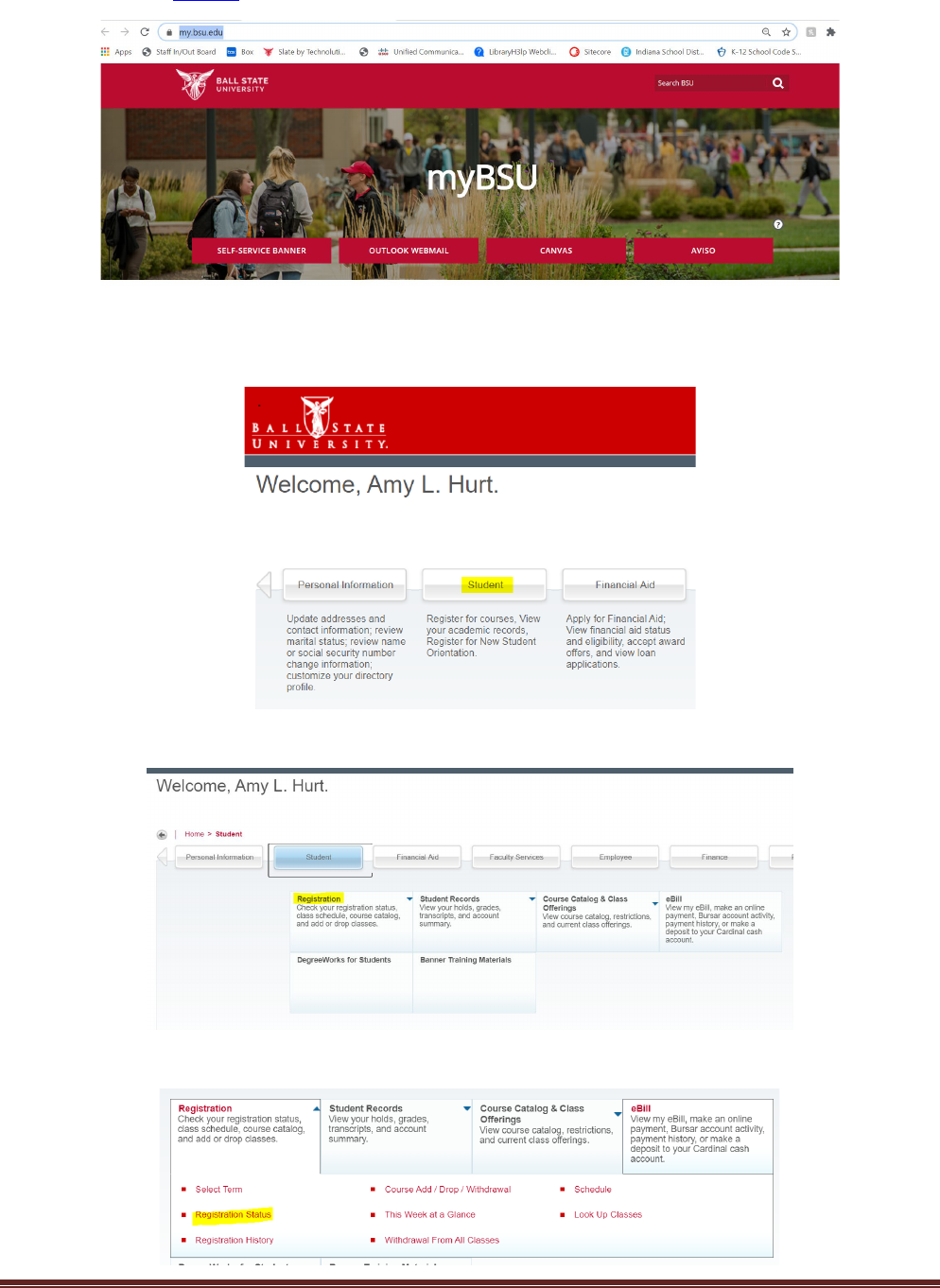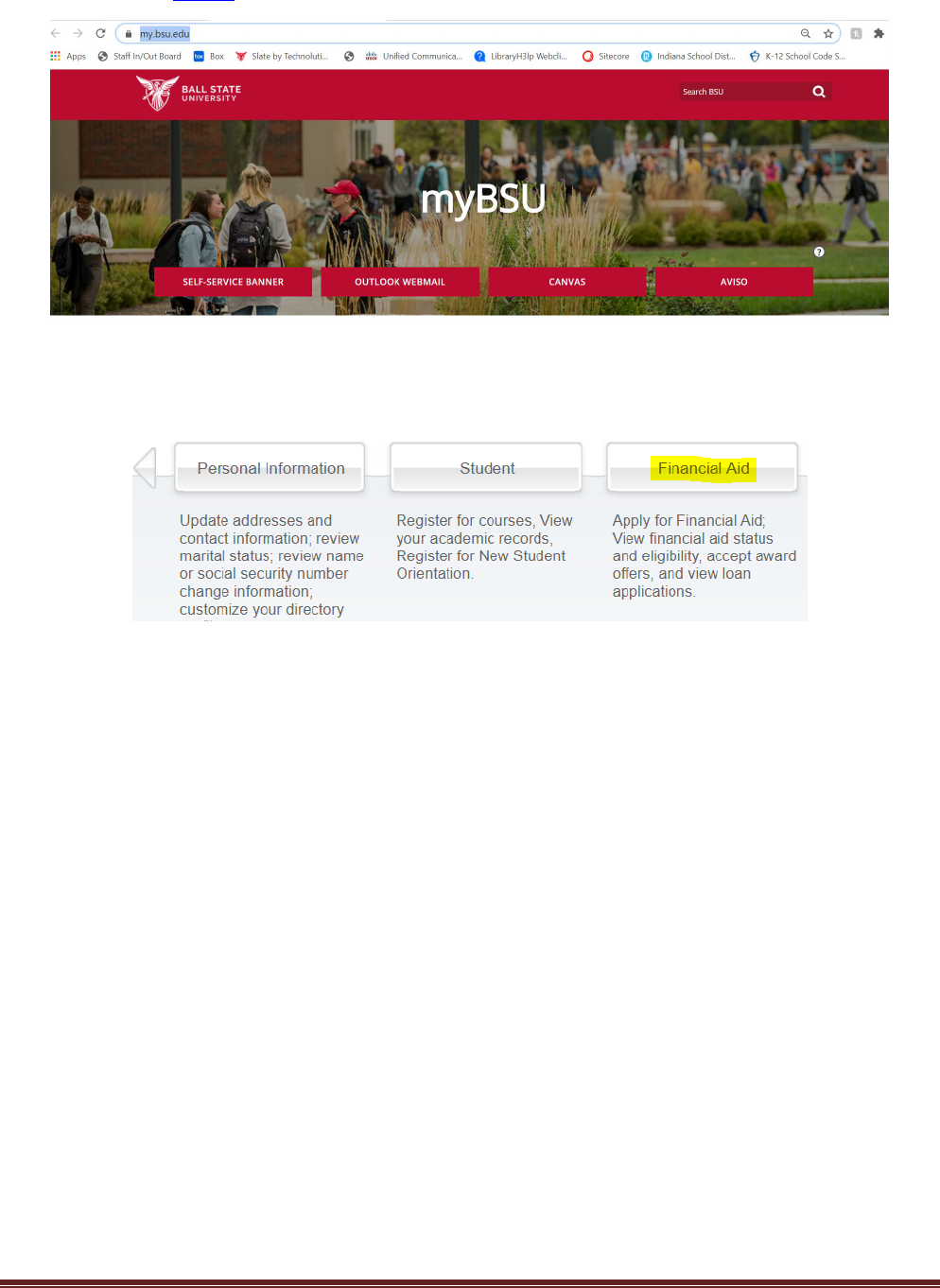
DUAL CREDIT PROGRAM
STUDENT AND PARENT HANDBOOK

Dear Student and Parents,
Preparing early for your college experience becomes ever more critical these days. Ball State University’s
Dual Credit Program, a term used for dual credit classes, provides you this opportunity by offering
college curriculum courses for credit while you are still attending high school.
The Dual Credit Program’s mission is to foster a partnership between Ball State University and your high
school. We focus on your college preparation by assuring quality instruction and offering you an
experience otherwise unattainable before entering college. Qualified teachers from your school, who
have been certified by Ball State University academic departments, teach the on-site courses, while the
online courses are taught by the Ball State University’s instructors. Teachers use course materials that
are consistent with those found at the university and conduct the courses with the same standards
demanded of on-campus courses.
Course credits earned through the dual credit helps you establish a college academic record and the
credits you earn also apply toward your high school graduation requirements.
Textbooks will need to be purchased for the online classes.
We appreciate your interest in Ball State University’s Dual Credit Program. Your decision to investigate
this opportunity will prove to be an important step in preparing for success in your future academic
endeavors.
If you have any questions, please feel free to contact my office at 765-285-1581.
Sincerely,
James C. Hendrix, Ph.D.
Assistant Director of High School and Statewide Initiatives
Table of Contents
About Ball State Page 3
Ball State Mission Statement Page 3
Program Overview
Ball State Dual Credit Program (DCP) Page 3
Ball State DCP Responsibilities Page 3
Course Delivery Methods Page 4
Course Expectations Page 4
Course Prerequisites Page 4
Textbook Information for Online Dual Credit Classes Page 4
Cost of Courses Page 4
Student Information
Benefits of Ball State Dual Credit Page 6
Program Requirements Page 6
Important Considerations before Attempting Dual Credit Courses Page 7
Courses Page 7
Admission/Registration General Information Page 7
Admission Process Page 7
Required Forms Page 8
Registration Process Page 8
Registration Time Tickets Page 8
Ball State Username and Password/Email Account Page 8
Two-Factor Authentication Page 8
Payment and Financial Information
Billing/Payment Methods Page 9
Free and Reduced Lunch Tuition Waiver Page 9
Installment Payments Page 9
Parent Payment Options Page 10
Administrative Holds Page 10
Financial Aid Student Eligibility Impacts SAP Page 10
Other Important Considerations for SAP Page 12
Grades
Ball State University Grade Information Page 13
Ball State Scholastic Standards Page 14
Transcript and Other Course Policies
Transcripts Page 14
Auditing Courses Page 14
Dropping or Withdrawing Page 15
Refunds Page 15
Course Transferability Page 16
Student Expectations
Rigor of Coursework Page 16
Course Syllabus Page 16
Evaluations Page 16

DC Student and Parent Handbook July 2022 Page 2
Student Policies
Code of Student Rights and Responsibilities Page 17
Title IX Policy Page 17
Student Academic Ethics Policy Page 18
Family Educational Rights and Privacy Act (FERPA) Page 18
Disability Services Page 18
Diversity Statement Page 18
Learning Tools and Resources for Dual Credit Students
Ball State Dual Credit Program Website Page 18
Ball State Email Account Page 18
Ball State ID Card Page 19
BSU ID Number Page 19
Canvas Page 19
Clearpath Page 19
Communication (COMM) Center Page 19
Computer Labs Page 19
Counseling Services Page 20
Indiana Diploma Requirements Page 20
Library Page 20
MyBSU Page 20
Myers-Briggs Personality Assessment Page 20
Technology HelpDesk Page 20
TransferIn Home (Indiana Core Transfer Library) Page 21
Tutoring Services Page 21
Udemy Business Page 21
Undergraduate Admission Application Fee Waiver Page 21
WellTrack Interactive Self-Help Therapy Page 21
Writing Center Page 21
Appendix
Applying for admission via Slate Page 23
Registering for Classes Page 32
Viewing your Registration Time Ticket Page 34
Resetting your BSU Password Page 36
View your BSU ID Number Page 36
View Final Grades Page 37
Paying your eBill Page 39
Paying your eBill as a Guest Payer Page 40
Setting up an Authorized Payer Page 42
Checking your Academic Progress (SAP) Page 44
Ordering Transcripts (as an active student) Page 45
Ordering Transcripts (as a former student) Page 46
Connect with Us Page 47
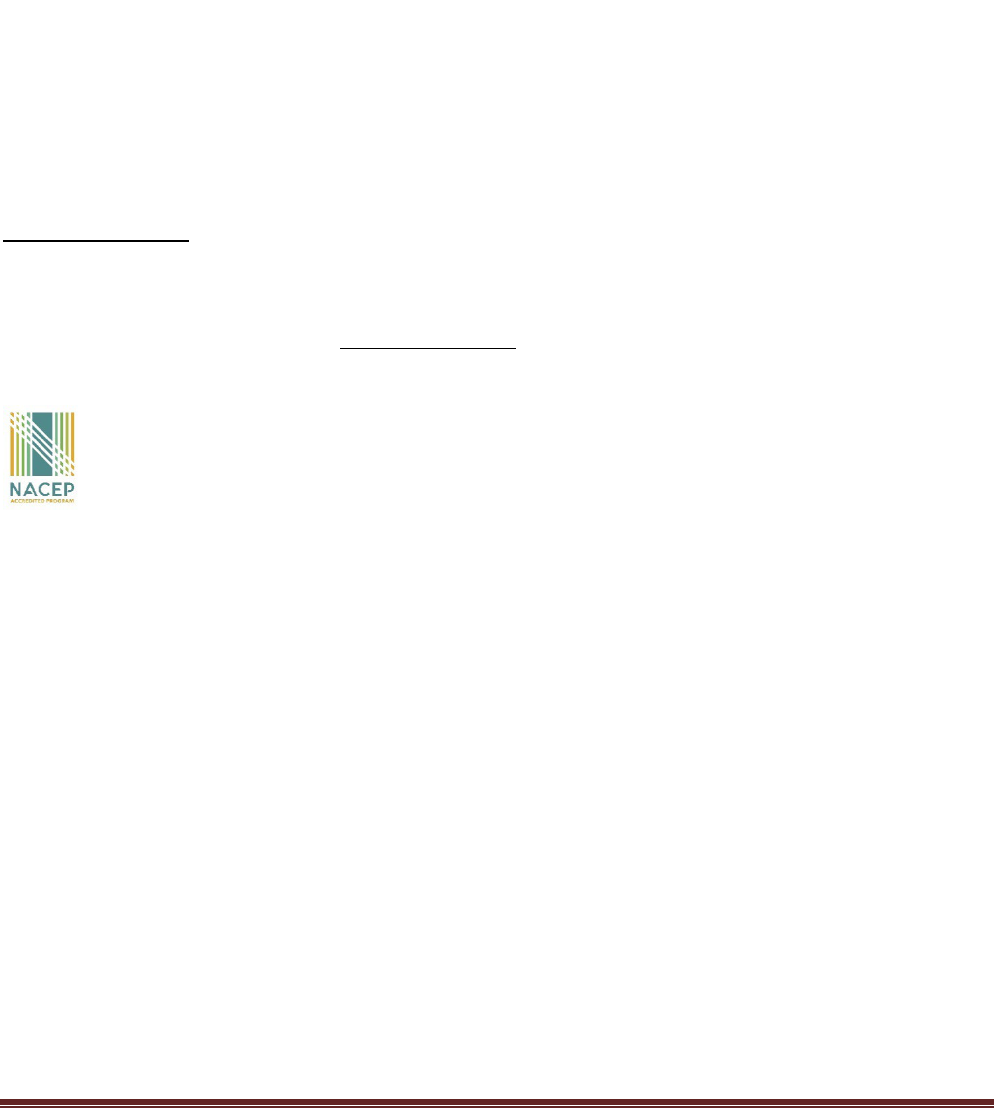
DC Student and Parent Handbook July 2022 Page 3
About Ball State
Ball State University is a public research university in Muncie, Indiana. Ball State’s 102-year tradition of
innovation and distinction began with the generosity of the five Ball brothers, local industrialists who
produced the famous Ball canning jars. To help fill Indiana’s need for more and better teachers, they bought
the property of a defunct school in Muncie and gave it to the state. What was founded as a small teacher
training college in 1918 is now a comprehensive, world-class university. We embrace the Ball family’s legacy
symbolized by the iconic Beneficence statue on our campus— the enduring values of excellence, innovation,
courage, integrity, inclusiveness, social responsibility, and gratitude. These values are the watchwords for our
next century.
Our seven academic colleges provide innovative programs that will give students access to professional
experiences and advanced technology from day one, and a student’s degree will be valued by employers. Our
university offers about 120 undergraduate majors and 130 minor areas of study
and more than 100 master's,
doctoral, certificate, and specialist degrees.
Ball State Mission Statement
We engage students in educational, research, and creative endeavors that empower our graduates to have
fulfilling careers and meaningful lives enriched by lifelong learning and service, while we enhance the
economic, environmental, and social vitality of our community, our state, and our world.
Program Overview
Ball State’s Dual Credit Program (DCP)
The primary goal of our program is to provide opportunities to earn college credit and gain experience while
preparing students to attend college. Juniors and seniors with a strong academic background and desire to
attend college are good candidates for the program.
Ball State’s DCP was awarded accreditation by the National Alliance of Concurrent Enrollment
Partnerships (NACEP), the sole accrediting body for concurrent partnerships, which sets standards
to ensure dual credit program quality, rigor and excellence.
We offer classes onsite, taught by high school instructors at various Indiana high schools, and online, taught
by Ball State University Faculty. We serve approximately 1,000 students per academic term and over 60 high
schools per academic year.
Ball State’s DCP works closely with partner high schools to provide a superior level of service in the areas of
faculty mentoring, student admission, registration and transcript processing. Faculty mentors take great pride
in developing collaborative relationships with high school dual credit instructors. Eligible high school students
engage in college-level courses that encourage them to persist in taking rigorous coursework throughout their
high school and college careers.
Ball State DCP Responsibilities
Ball State’s DCP is committed to serving our high schools students with the utmost integrity by providing
quality postsecondary educational opportunities.
Ball State will:
• Communicate all dual credit requirements.
• Provide exceptional customer support for day-to-day occurrences.
• Register high school students for transcripted college credit.
• Communicate and respond in a timely manner to all correspondence.
• Make onsite high school visits (when requested) to meet with students, parents, instructors and/or
administrators.

DC Student and Parent Handbook July 2022 Page 4
• Adhere to NACEP standards and maintain programmatic accreditation.
Course Delivery Methods
There are two different methods of course delivery.
1. On-Site (Live) Dual Credit Courses Taught in High School
Instructors are your own high school teachers approved as Ball State adjunct instructors by Ball State’s
respective academic departments. These courses meet both the student’s high school requirements
and provide additional instruction to satisfy collegiate standards.
2. Online Dual Credit Courses
Instructors are Ball State professors. Your school does not need to do anything because all course
work and examinations are done completely online by you. Textbooks are required. Some courses
have digital textbooks and the fee is charged automatically to the student’s account.
The online dual credit classes are 16 weeks in duration for fall and spring and 10 weeks in summer
with a structured format requiring assignments each week. The students may take more than one
course at a time and they work at their own speed during the week.
Course Expectations
Dual credit courses are college level and essentially parallel the university’s requirements. Teachers expect the
same quality of work from you as is expected from main campus college students. Abstracting critical
information, conceptualizing, and problem solving at a higher level will be a common denominator in all dual
credit courses.
Course Prerequisites
Some dual credit courses require prerequisites (a course or a proficiency test that is required before taking an
advanced course). Students are responsible for checking the course prerequisites before signing up for
classes. A student’s high school guidance counselor or school principal signs the permission form
acknowledging eligibility and verification that the student(s) has met any prerequisites.
Textbook Information for Online Dual Credit Classes
Textbook information can be found on the syllabus of each class or on the Ball State Bookstore website
.
Students will need their course prefix, course number, and section number (i.e. ENG 103, 930) to look up
required materials for the course. You are expected to have your textbook on the first day of class.
Once on the bookstore’s website, use the option labeled “course materials & textbooks” beneath the Ball
State logo. Then choose “find course materials”. Using the drop-down options on the find course materials
page, select the following: Term – Fall 2021, Department – (e.g.SOC), Course – (e.g.,100), Section (e.g., 90J). If
taking more than one class, the student can add each class before clicking “Find Material.” Please note some
items will be labeled ‘required’ while others are ‘optional’.
Some textbooks will be digital as well. Courses that use digital textbooks can only be ordered through the BSU
Bookstore.
If you rent or buy your textbook from another retailer, be certain to buy the textbook with the correct ISBN
number, as there are often multiple editions.
Cost of Courses
There are three different costs of dual credit classes, based on the type of class it is.

DC Student and Parent Handbook July 2022 Page 5
Non-Priority – Onsite (classroom taught) classes cost $250 per class.
Priority – The Onsite (classroom taught) classes cost $25 per credit hour and are listed on the “Priority
Dual Credit Liberal Arts Courses” or on the “Dual Credit Career and Technical Crosswalk” chart
below. These are classroom taught courses only.
Online – Online dual credit classes cost $350 per class plus textbooks. Some textbooks charges are
automatically charged to the student’s bill (i.e. MATH 125 and SOC 100).
Tuition is waived for free or reduced lunch students, but textbook charges will be the responsibility of the
student. School official needs to notify Ball State in writing if the student qualifies for free or reduced-price
lunch participation.
Tuition is not waived for 21st Century Scholarship students.
Installment payments are allowed.
“Priority Dual Credit Liberal Arts Courses” or “Dual Credit Career and Technical Crosswalk” courses:
English
ENG 103 English Composition: Rhetoric and Writing (3 credit hours)
ENG 104 English Composition: Composing Research (3 credit hours)
Communication
COMM 210 Fundamentals of Public Communication (3 credit hours)
Foreign Languages
CH 101 Beginning Chinese 1 (4 credit hours) not on Core Transfer Library
CH 102 Beginning Chinese 2 (4 credit hours) not on Core Transfer Library
CH 201 Intermediate Chinese 1 (4 credit hours) not on Core Transfer Library
CH 202 Intermediate Chinese 2 (4 credit hours) not on Core Transfer Library
FR 101 Beginning French 1 (4 credit hours)
FR 102 Beginning French 2 (4 credit hours)
FR 201 Intermediate French 1 (3 credit hours)
FR 202 Intermediate French 2 (3 credit hours)
GER 101 Beginning German 1 (4 credit hours)
GER 102 Beginning German 2 (4 credit hours)
GER 201 Intermediate German 1 (3 credit hours)
GER 202 Intermediate German 2 (3 credit hours)
JAPA 101 Beginning Japanese 1 (4 credit hours) not on Core Transfer Library
JAPA 102 Beginning Japanese 2 (4 credit hours) not on Core Transfer Library
JAPA 201 Intermediate Japanese 1 (4 credit hours) not on Core Transfer Library
JAPA 202 Intermediate Japanese 2 (4 credit hours) not on Core Transfer Library
SP 101 Beginning Spanish 1 (4 credit hours)
SP 102 Beginning Spanish 2 (4 credit hours)
SP 201 Intermediate Spanish 1 (3 credit hours)
SP 202 Intermediate Spanish 2 (3 credit hours)
Mathematics and Physics
MATH 111 Pre-Calculus Algebra (3 credit hours)
MATH 112 Pre-Calculus Trigonometry (3 credit hours)

DC Student and Parent Handbook July 2022 Page 6
MATH 125 Quantitative Reasoning (3 credit hours)
MATH 132 Brief Calculus 1 (3 credit hours)
MATH 165 Calculus 1 (4 credit hours) (classroom taught)
MATH 166 Calculus 2 (4 credit hours) (classroom taught)
PHYC 100 Conceptual Physics (4 credit hours)
Science and Humanities
ANAT 201 Fundamentals of Human Anatomy (3 credit hours)
BIO 100 Biology for a Modern Society (3 credit hours)
HIST 201 American History, 1492-1876 (3 credit hours)
HIST 202 US History, 1877 to Present (3 credit hours)
KINE 240 Athletic Safety and Injury Prevent (3 credit hours)
NUR 101 Terminology for Health Care Professionals and Consumers (2 credit hours)
PHYS 215 Human Physiology (5 credit hours)
PSYS 100 Introduction to Psychological Science (3 credit hours)
Graphic Arts
GCM 180 Graphics: Intro to Printing Processes (3 credit hours)
GCM 184 Graphics: Computer Applications (3 credit hours)
GCM 286 Graphics: Fundamentals of Photography (3 credit hours)
Student Information
Benefits of Ball State Dual Credit
We at Ball State would like to thank you for your interest in our Dual Credit program. There are multiple
benefits for students who participate:
• Allows students to receive high school and college credit simultaneously.
• Minimizes duplication of course content taken in high school and in college.
• Permits high school students to accumulate credits before entering college so they can graduate from
college early or on time.
• Provides high school students with a wider range of courses, thus giving them an opportunity to
complete general education courses required at most colleges.
• Allows students to explore different fields before declaring a major.
• Facilitates a seamless transition from high school to college. Students can get a taste of what college
is like without feeling overwhelmed by a new environment. They can see how their high school
classes compare to college courses and how college professors differ from high school teachers.
• Can engage high school juniors and seniors with rigorous coursework throughout their last two years
of high school.
• Lowers the cost of a post-secondary education.
Program Requirements
Any high school junior or senior with a strong academic background and desire to attend college make good
candidates for the Dual Credit program. The high school identifies and approves the academically strong
student(s) who are on track for college preparation courses based on the following criteria:
• Student is on track toward fulfilling the basic academic preparation for admission to a four-year
college or university;
• Student ranks in the upper third of the high school class;
• Student has a grade point average (GPA) of 3.0 or higher on a 4-point scale (as evident by a
college preparatory curriculum and advanced coursework);

DC Student and Parent Handbook July 2022 Page 7
• Student has appropriate high school endorsements from teachers and guidance counselors.
Students cannot exceed 15 credit hours of concurrent enrollment courses unless an exception is established
by the Division of Online and Strategic Learning at BSU. The Dual Credit office makes approval decisions for
students who wish to exceed 15 credit hours.
Students must be admitted to the Dual Credit Program in order to receive college credit. Failure to complete
the Dual Credit Program’s admission and registration process may result in the student not receiving college
credit.
Important Considerations before Attempting Dual Credit Courses
Please consider the following information before registering for dual credit courses.
• Even good students may receive a lower grade in their first college course than they usually earn in a
high school course. If you are taking courses that also count toward requirements for high school
graduation, a low grade can negatively impact your high school GPA or your ability to graduate.
• Some students do not take their dual credit courses seriously and receive a low grade as a result. This
grade becomes part of your permanent high school and college transcript and could lower your
college GPA once you begin your post-secondary education.
• A few colleges will not accept dual credit classes. Be sure to check the transfer policy at each college
you are considering for your post-secondary education.
• Withdrawals (W) from dual credit courses may impact a student’s future ability to receive financial
aid.
Please consult with your guidance counselor about taking dual credit courses.
Courses
A list of onsite and online dual credit courses offered are available on the Ball State Dual Credit website
.
Admission/Registration General Information
Ball State University’s Dual Credit Program has two processes that students must complete, an application for
admission and a registration process. Failure to complete Ball State Dual Credit’s entire admission and
registration process may result in the student not receiving college credit for their dual credit courses.
Note: Admission into the Dual Credit Program does not guarantee admission to Ball State University (BSU)
as an on-campus student. Dual Credit students will have a permanent record at Ball State University.
Admission Process
Students will be required to complete an online application for admission through Slate, the University’s
online application system. We recommend the student use a personal email address for this step and not their
school email. Many schools block emails from outside, which will prevent your student from receiving
pertinent information.
This will prepare students for the college admissions process, as this is the same program that Ball State
utilizes for all undergraduate and graduate students. It will also create a near paperless system, which is more
secure for all. Students will be required to apply for admission to the dual credit program each academic year.
Additional admission information can be found on the Ball State Dual Credit website
.
The High School Parent/School Permissions form will be required and is a paper form that needs signed and
uploaded into Slate. It can be uploaded by the student, the school counselor or emailed to
dualcredi[email protected]u.
Step-by-step instructions for the admission process can be found in the appendix.

DC Student and Parent Handbook July 2022 Page 8
Required Forms
Students are required to submit the High School and Parent Permission Form as part of the admissions
process. The form can be uploaded by the student in to the Slate application portal, uploaded by the
counselor in to the Slate application portal or emailed to dualcredit@bsu.edu
.
• High School /Parent/Guardian Permission Form
The High School/Parent Permission Form
is required with signatures to satisfy the approval
requirements. The form has a spot for the school to approve the student taking dual credit classes
and that they have met the prerequisites. It will also allow the school to verify if the student is on the
Free and Reduced Lunch program. The parent/guardian signature acknowledges the financial
obligations.
Registration Process
Students will be required to register, once admitted, through our online registration system called
Self-Service
Banner. This registration system is used by all University students, which is a great learning experience for
students who plan on pursuing a college career after high school. Students will be required to register for their
dual credit courses each semester, during the designated registration period.
Step-by-step instructions for the registration process can be found in the appendix.
Registration Time Tickets
A time ticket is assigned by the Registrar’s office for each student that has been admitted to the University.
You cannot register for your classes until your time ticket has been assigned. Your time ticket will have a start
time, meaning this is the earliest date you can register for your class(es). See instructions in the appendix on
how to see if your time ticket has been issued.
Ball State Username and Password/Email Account
Students have two-email accounts, their Ball State email account and the personal email account used to
apply for admission.
• The Ball State email address is also the student’s Ball State username and will end in @bsu.edu. It is
assigned to the student from the University, once admitted. Students can access their BSU email at
www.bsu.edu/webmail
. All communication with your online dual credit instructors will be through
your Ball State email account and/or our learning management system, Canvas.
• The student’s personal email account is also called their Lifeline. It can be used as a backup email
account in case you forget your username or password.
With the Lifeline, students are able to reset their own password by going to www.bsu.edu/password
- click on
“Forgot Password” (top right of the page) and type in their Ball State username. An email is sent to their
Lifeline. It contains a Key Code and a URL. Click on the URL, enter the Key Code, and submit. A second email is
sent to the Lifeline with the new Ball State password. A token is sent to students so they may create their own
password. If the student does not receive the email with the key code and URL in their personal email account
they will need to contact the Technology HelpDesk at 765-285-1517. The student must provide their name
and let the HelpDesk know they are a dual credit student.
Two-Factor Authentication
In order to provide an additional layer of security when logging it to Ball State networks and applications, we
use Duo Security
as the second level of online security. The Duo application confirms your identity by using a
smartphone or token to provide a second verification, which is why it’s called “two-factor” authentication.
Read the set-up instructions.

DC Student and Parent Handbook July 2022 Page 9
Download the Mobile App:
• Apple
• Android
If you need to re-activate your smartphone to use Duo, you purchased a new phone and need to set it up for
Duo two-factor authentication, or have general questions about using Duo, check out these HelpDesk articles
.
Payment and Financial Information
Billing/Payment Methods
A bill is sent to the home address with a due date of the first of the following month. Payment can be made
using the eBill option through the student’s Self-Service Banner access (https://my.bsu.edu
). Students should
sign in with their Ball State username and password, click “Self-Service Banner” - “Student” and “eBill” tabs.
Payment of the Ball State bill can be made using the following payment methods:
o Online - Log into eBill and pay your bill using either of the following options.
o ECHECK – Use the account and routing numbers for a valid checking or savings account. No
fee is charged to use this option.
o CREDIT CARD – Log into eBill and pay your bill using credit card payment. We only accept card
payments online, not in person. The payment will include an additional 2.75 percent
convenience fee.
o Mail – Mail a check to the following address: Ball State University, Office of Student Financial Services,
Lucina Hall, Room B32, Muncie, IN 47306. Please be sure to include the student ID number.
o In person – You may pay your bill in person with any of the following: cash, check, money order, or
cashier’s check. Please bring your payment to: Lucina Hall, Room B32.
Free and Reduced Lunch Tuition Waiver
Academically qualified students who are also eligible for free or reduced lunch may enroll in Ball State dual
credit courses at no cost. The Ball State Dual Credit Office will verify with the local school district. Once
verified, tuition will be waived. If eligibility is not verified by the school district, students will be billed the full
cost of the class. If a student is on free/reduced lunch and receives a bill, they should contact the Ball State
Dual Credit Office.
Textbook costs are not waived for those on free and reduced lunch.
Installment Payments
In addition, Ball State University accepts installment payments for tuition. Installment payments can be made
in four partial payments. Tuition is always due on the first of the month. If payment is not received by the due
date, the first of the month, the following steps occur:
• An administrative hold is placed on the student record.
• Students will not be permitted to register for any subsequent terms until the hold is removed.
• Students’ transcript and/or diploma will be withheld.
• The University will assess additional fees for any collection costs, but not limited to attorney fees and
court costs.
For payment questions, please contact the Dual Credit office at dualc[email protected]
.

DC Student and Parent Handbook July 2022 Page 10
Parent Payment Options
Students may also set up an Authorized Payer
such as a family member, to have online access to their
account. Authorized Payers will need a unique login for each student. Authorized Payers also receive email
notices when the eBill is available.
If you would rather, a Guest Payer option allows the guest to pay on your account but they will not be able to
see the bill or balance. A guest payer can access your account with the student’s last name and the student’s
Ball State ID number.
To add an authorized payer, or for guest payer instructions, please follow the steps located in the appendix.
Administrative Holds
It is the policy and procedure of Ball State University to allow a department to place a hold on the education
record of a student. A hold from the Office of Student Financial Services (formerly called the Bursar’s office)
means that a financial obligation (i.e. library fees, tuition, parking fees, etc.) has not been met. Check your
eBill for the amount you need to pay. Until your past due balance is paid in full, the hold will prevent you from
registering for classes, obtaining a transcript or diploma, making a change to a schedule or processing an
application for admission. If a bill remains unpaid it will be sent to collections.
Financial Aid Student Eligibility Impact Satisfactory Academic Progress (SAP)
The U.S. Department of Education, the Indiana Commission for Higher Education and Ball State University
require that students applying for federal, state, and some institutional funds demonstrate satisfactory
academic progress. The programs at Ball State University affected by the satisfactory academic progress policy
include:
• Federal Pell Grant
• Teacher Education Assistance for College and Higher Education Grant (TEACH)
• Federal Supplemental Educational Opportunity Grant (FSEOG)
• Federal Work-Study (FWS)
• Indiana Frank O’Bannon Grant
• Indiana Evan Bayh 21st Century Scholars Award
• Indiana Adult Student Grant
• Indiana National Guard Supplement
• Indiana Child of Veteran and Public Safety Officer Supplemental Grant (CVO)
• State of Indiana scholarship programs
• Fees Assistance Grant
• Ball State Grant
• Federal Perkins Loan
• Federal Direct Stafford Loan
• Federal Direct Parent PLUS Loan
• Federal Direct Graduate PLUS Loan
Graduate or undergraduate students receiving aid from or intending to apply for aid from any of these
programs must demonstrate satisfactory academic progress or face denial of aid from these sources.
Continuing or returning students applying for aid from these programs for the first time must have
demonstrated earlier progress in order to receive aid. Satisfactory academic progress is checked each
semester. No financial assistance, including Stafford Loans and PLUS Loans, will be reinstated for prior terms
in which the student was not in compliance with this policy. Academic clemency does not apply to financial
aid.

DC Student and Parent Handbook July 2022 Page 11
Satisfactory academic progress for financial aid is defined as:
• maintaining a GPA consistent with university graduation requirements
• staying on pace to graduate
• completing a degree within a maximum time frame Failing to maintain any one of the three progress
measures means you cannot receive aid from financial aid programs subject to Satisfactory Academic
Progress.
You can check your academic progress in Self-Service Banner
. Instructions can be found in the appendix.
Criteria for SAP
• Grade Point Average (GPA) Requirement
Your GPA must meet or exceed the university academic progress policy
.
The Office of Registration and Academic Progress will notify you if you are placed on probation or
denial for failing to maintain the GPA requirements.
If you’re placed on probation, you have an opportunity to improve your GPA. Failure to do so in the
required time frame will result in disqualification from the university.
Academically disqualified students are not eligible for financial aid. Even if you are reinstated by the
Office of Registration and Academic Progress through an appeal, you are not automatically eligible for
financial aid.
You can complete a separate appeal for financial aid, but there is no assurance the appeal will be
approved simply because you are allowed to re-enroll.
• Pace to Graduation Requirement
Students are required to earn 67 percent (without rounding up) of attempted hours to stay on pace to
graduate (See below for examples)
Pace is calculated by dividing earned hours by attempted hours. Pace is measured at the end of each
semester.
If a student does not meet the pace requirement at the end of a semester, they will be placed on
financial aid warning for the following semester. After the warning semester, the student will need to
have regained pace (earning 67 percent of cumulative hours attempted) or financial aid will be
denied.
Please Note: Students who receive a grade of incomplete because of studying abroad, independent
learning courses, or for other reasons may fall below the 67 percent pace requirement. As a result,
they may lose their financial aid eligibility until grades and hours earned have been posted for those
courses.
EXAMPLES
Example 1: A student enrolled for 12 hours during a first semester of attendance but earned only six
hours and had a GPA consistent with university graduation requirements. Although the necessary GPA
has been met, pace was not maintained (six cumulative hours earned divided by 12 cumulative hours
attempted equals 50 percent). This student would be placed on financial aid warning the following
semester.

DC Student and Parent Handbook July 2022 Page 12
Example 2: The above student enrolled for and completed 14 hours during the warning semester with
a GPA consistent with university graduation requirements. This student is now off financial aid
warning because the student regained pace (20 cumulative hours earned divided by 26 cumulative
hours attempted equals 76 percent).
Example 3: A student who just finished the warning semester has a pace of 65 percent and a GPA
consistent with university graduation requirements. This student would not be eligible for financial aid
because pace is not at 67 percent.
• Maximum Timeframe Requirement
Students pursuing a bachelor’s degree or associate’s degree are expected to complete degree
requirements within a maximum time frame based on attempted hours (including transfer hours and
advanced standing hours).
You will be ineligible for financial aid once you reach your maximum time frame or it has been
determined you cannot complete your degree within this time frame. This time frame is:
o for students seeking a bachelor’s degree – 180 hours
o for students seeking an associate’s degree – 90 hours (Therefore, eligibility for aid from
sources listed previously is limited to the same time frames.)
EXCEPTIONS
The following are limited to eight semesters for students who are working on a bachelor’s degree:
o Indiana Frank O’Bannon Grant
o Indiana National Guard Supplement
o Indiana 21st Century Scholars Award
The Indiana Child of Veteran and Public Safety Officer Supplemental Grant is limited to 124 attempted
hours. Graduate students need to complete their degree within the time frame specified by their
academic department.
APPEALS
Students enrolled in a second undergraduate degree program who have reached their maximum time
frame will need to appeal. If an appeal is granted, only the hours required to earn the second degree
will be used in extending the maximum time frame.
Other important considerations for SAP
INCOMPLETES (“I” GRADES)
Incomplete grades will not count toward progress until such time as the grade and hours earned are posted.
At that time, hours completed will count for the period of original registration. If you are denied financial aid
due to not maintaining Satisfactory Academic Progress, you may not receive aid retroactively for the term(s)
you are attending while finishing the incomplete. You will need to contact the Office of Financial Aid and
Scholarships when the final grade is posted by the Registrar’s Office.
GRADE CHANGES
Grade changes need to be reported by the student to the Office of Financial Aid and Scholarships once the
grade has been posted by the Registrar’s Office.
WITHDRAWALS (“W” GRADES)
Withdrawals will not count toward progress and, as a result, will negatively affect a student’s pace, as well as
count against the maximum time frame.
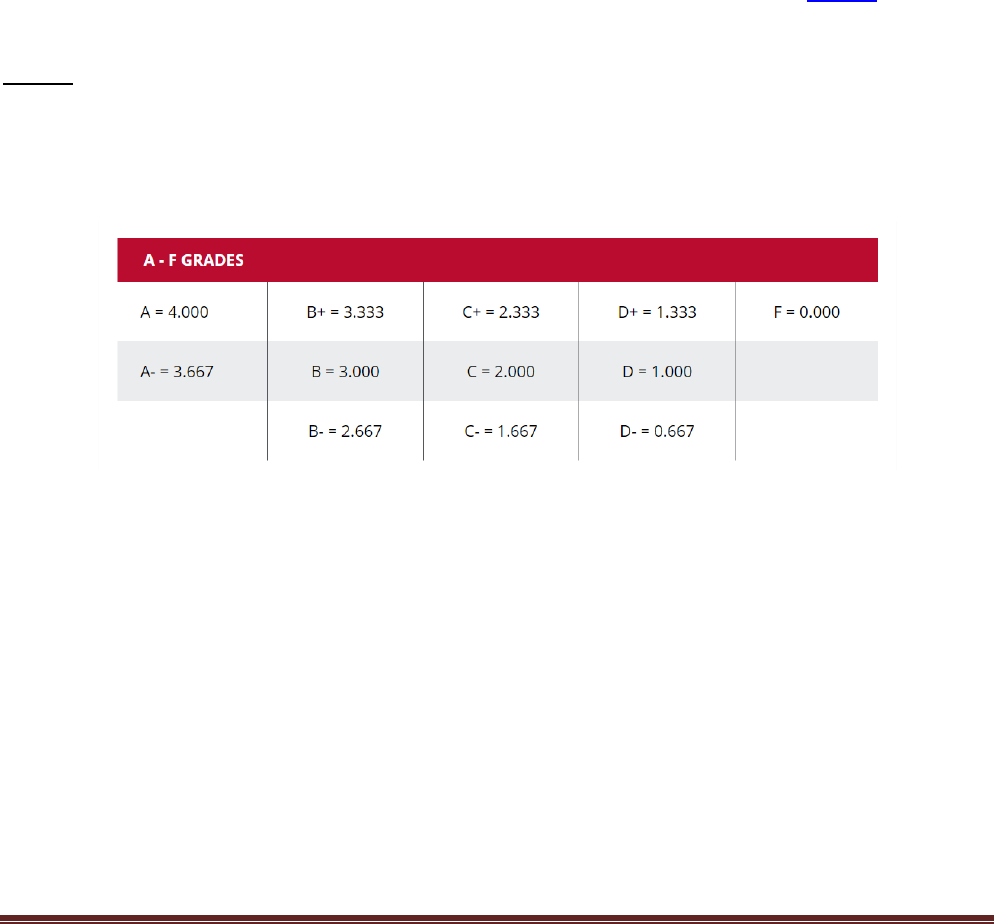
DC Student and Parent Handbook July 2022 Page 13
COURSE REPETITIONS
Course repetitions may have a negative effect on pace and will not extend the maximum time frame
established for undergraduate students.
ADD/DROP HOURS
Add/Drop hours are locked in at the end of the add/drop period for purposes of satisfactory academic
progress. The add/drop period for fall, spring, and summer semesters ends the fifth day of the semester. The
add/drop period for First Summer Semester and Second Summer Semester ends the third day of the
semester.
TRANSFER AND ADVANCED-STANDING HOURS
Transfer and advanced-standing hours will count toward both earned and attempted hours. Attempted hours
are used in calculating the maximum time frame.
PERIODS OF ENROLLMENT WITH NO FINANCIAL AID
Satisfactory Academic Progress is a measurement of a student’s academic progress regardless of whether or
not aid was received in a particular enrollment period.
The full policy regarding SAP can be found on the Office of Financial Aid and Scholarship’s website
.
Grades
Ball State University Grade Information
The university reports and records grades using the plus/minus letter system. Quality points are allocated to
each recorded grade according to the following scale:
If a letter grade of C- or below is earned in a course, certain major programs may not accept the grade for
their area of study at BSU. Some courses, i.e. ENG 103, require a letter grade of “C” or higher to be able to
register for the next course in sequence, ENG 104.
Credit earned under the Dual Credit Program will be recorded as if the course were taken on the Ball State
campus; therefore, it will be applicable toward a degree at Ball State University.
Keep track of your college credit grades. If you are unable to maintain a C or above, talk with your parents,
counselor, and instructor. If needed, request to withdraw from the course (see section titled Dropping or
Withdrawing). Grades could impact a student’s main campus admission verification status.
High school official grades are posted when the classes are completed. A high school year-long class grade is
posted with an “I” for incomplete at the end of the BSU fall term. A change of grade form is processed posting
the final grade at the end of your school year. Grades for online courses are available for viewing five days

DC Student and Parent Handbook July 2022 Page 14
after the Ball State term end date. Spring term grades are viewable by mid-June. Instructions for viewing final
grades can be found in the appendix.
Ball State Scholastic Standards
Please be aware of Ball State University’s Scholastic Standards, which encourages satisfactory progress
toward meeting the minimum requirements for graduation and/or entering into professional and graduate
fields of study.
• Academic Probation – Students are placed on academic probation when their cumulative grade
point averages are less than 2.0. The Office of the Registrar will notify students who are on
academic probation of their status; including any requirements the university establishes to help
improve their academic performance.
• Academic Dismissal – To avoid academic dismissal, a student on academic probation must meet
the following conditions in their next term of attendance:
• A student with fewer than 30 earned credits (including transfer credit and other credit
granted) is required to earn a 2.0 term GPA at the end of the probation term and each
following term until the cumulative average reaches 2.0 or above.
• A student with 30 or more earned credits (including transfer credit and other credit
granted) is required to earn a 2.1 term GPA at the end of the probation term and each
following term until the cumulative average reaches 2.0 or above.
It is the student’s responsibility to adhere to the university scholastic standards and seek assistance if needed.
Transcript and Other Course Policies
Transcripts
When you take dual credit classes through Ball State, you start your college GPA and transcript. The grade
earned in a student’s dual credit course(s) will be reported on your permanent, official college transcript from
Ball State, and can be seen by every university to which you apply. It is the responsibility of the student to
check their Ball State University transcript after each term to ensure proper credit was received for the
completed dual credit course(s).
Student enrolled in the current Ball State’s Term
Students presently enrolled in the current Ball State term can request up to 10 free paper transcripts for up to
60 days past the end of the Ball State term.
Students enrolled in Previous or Former Ball State Term (Including full year classes)
There is a fee for each transcript.
Instructions to order transcripts, for both student types listed above, can be found in the appendix.
Transcripts will be mailed unless requested otherwise. There is a fee for electronic mailing.
If a student needs further assistance requesting a transcript, they should contact the Registrar and Enrollment
Services Office at 765-285-1970.
Auditing Courses
All dual-credit courses taken must be credit bearing. High school students are not permitted to audit dual-
credit courses; these courses must be graded and earn college credit.
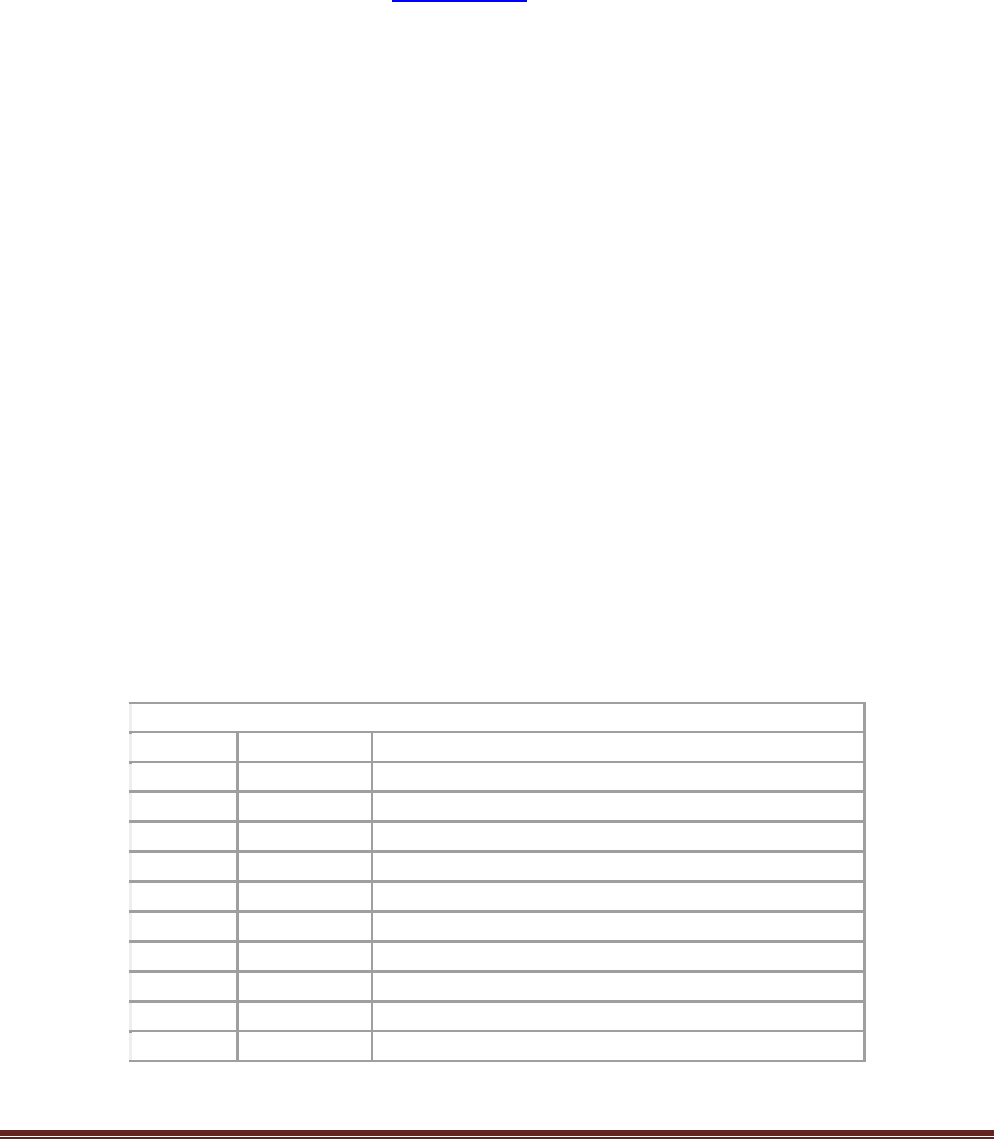
DC Student and Parent Handbook July 2022 Page 15
Dropping or Withdrawing
Enrolling in a college course is a significant academic and financial commitment. Students and parents should
seriously consider student obligations prior to enrollment.
The grade earned in the student’s dual credit course will be recorded on an official Ball State University
transcript, regardless of what it is, unless timely action is taken to drop or withdraw from the course.
The following are guidelines surrounding the drop/withdrawal policy:
1. Student should email Nancy Day at nday@bsu.edu
to request a drop/withdraw from their class.
a. Dropping/withdrawing from the class at the high school does not complete the request with
the Ball State Dual Credit office. If the student does not email Nancy Day, as instructed, they
risk earning a failing grade as they will still have a BSU grade recorded since they failed to
contact the BSU Dual Credit office.
2. Drops occur only during the first week of Ball State fall and spring terms. A drop removes the class
from the student’s schedule and eBill. It will not appear on a Ball State transcript.
3. Withdrawals start the second week of Ball State fall and spring terms and run through week ten.
Withdrawals during this time will be documented on a Ball State transcript with a “W” letter grade. A
portion of the class cost will be owed, based on the week the withdrawal is requested.
4. Withdrawals are not official until the Dual Credit Office is notified (the student will continue to be
billed and liable for any additional fees that may be charged).
5. Charges may still be associated with the class due to the refund percentage timeframe (see section
titled “Refunds” below).
6. Upon processing of the drop/withdrawal request, the student, instructor and counselor will be
notified.
7. The transcript will show a “W” for a withdrawal, but it will not affect the student’s grade point
average, (it may, however, affect their Student Academic Progress).
Refunds
1. Drops – 100% refund the first week of Ball State fall and spring terms.
2. Withdrawals – start the second week with a reduced weekly percentage through the first eight weeks
of the term.
3. High school courses which run the full high school term will follow the fall refund schedule.
4. The last day to withdraw from a class is the end of the 10
th
week.
5. Ball State’s Dual Credit refund schedule can be found below.
Refund Schedule for Complete Withdrawal of Dual Credit Courses
Week
Refund
Transcript Entry
1
100%
Class will be dropped from the student’s transcript
2
80%
A "W" for withdrawal will appear on BSU’s transcript
3
60%
A "W" for withdrawal will appear on BSU’s transcript
4
50%
A "W" for withdrawal will appear on BSU’s transcript
5
40%
A "W" for withdrawal will appear on BSU’s transcript
6
30%
A "W" for withdrawal will appear on BSU’s transcript
7
20%
A "W" for withdrawal will appear on BSU’s transcript
8
10%
A "W" for withdrawal will appear on BSU’s transcript
9
0%
A "W" for withdrawal will appear on BSU’s transcript
10
0%
A “W” for withdrawal will appear on BSU’s transcript

DC Student and Parent Handbook July 2022 Page 16
Course Transferability
Credit earned under the Dual Credit Program are recorded as if the course(s) were taken on the Ball State
campus; therefore, they would apply toward a degree at Ball State University or transferred to other
designated colleges or universities as listed on the CTL. The Onsite and Online classes list, found on our
website, shows the Ball State University courses offered through dual credit and are annotated with a (Y) if
they are on the CTL.
Students need to verify transferability with their respective schools to determine if the course is accepted as
part of their major or as an elective. Ultimately, the transfer value of credits earned through dual credit rests
with the institution where the student wants to transfer the credit. It is each college or university’s right to
accept or decline credits from other institutions. Before enrolling in Ball State dual credit courses, students are
strongly encouraged to investigate transferability issues with the colleges and/or universities they are
interested in attending. We recommend that students retain the course syllabus and save major class
assignments for every dual credit course they wish to transfer, in case someone at their intended college or
university questions the equivalency of the course. Learning that a course does not transfer or will not fit into
their course load does not merit a refund.
Student Expectations
Rigor of coursework
Whether dual-credit courses are taught online or onsite (in the high school), all students should expect these
courses to be academically rigorous. The content is no less rigorous for high school students, so students
should expect to participate in college-level content and discussion appropriate for college students.
Course Syllabus
On the first day class, instructors will provide each dual-credit student with a copy of the course syllabus. It is
important to read and refer to the syllabus carefully as it will provide important information needed to be
successful in the course. The course syllabus is considered to be a type of contract between the instructor and
the student. In addition to reflecting the individual instructor’s teaching methods and strategies, the syllabus
includes:
• Course number and title
• Instructor’s name, office phone number, college/high school e-mail address, office hours
• Prerequisites and level of preparation expected to succeed in the course
• Description of how the course is going to be conducted (this is typically a proposed schedule of
instruction)
• Student responsibilities, including required textbooks and other instructional materials, assignments
and other requirements of the course
• Statement of how grades will be determined
• Attendance policy
• Additional information
• Disability accommodations
• Additional academic student resources
We recommend that students keep a copy of the syllabus of each course taken as it may play a role when
colleges are deciding whether to transfer credit into their degree programs.
Evaluations
The National Alliance of Concurrent Enrollment Partnerships (NACEP) certification requires the following
evaluations/assessments. The Office of Institutional Research and Decision Support will conduct the end-of-
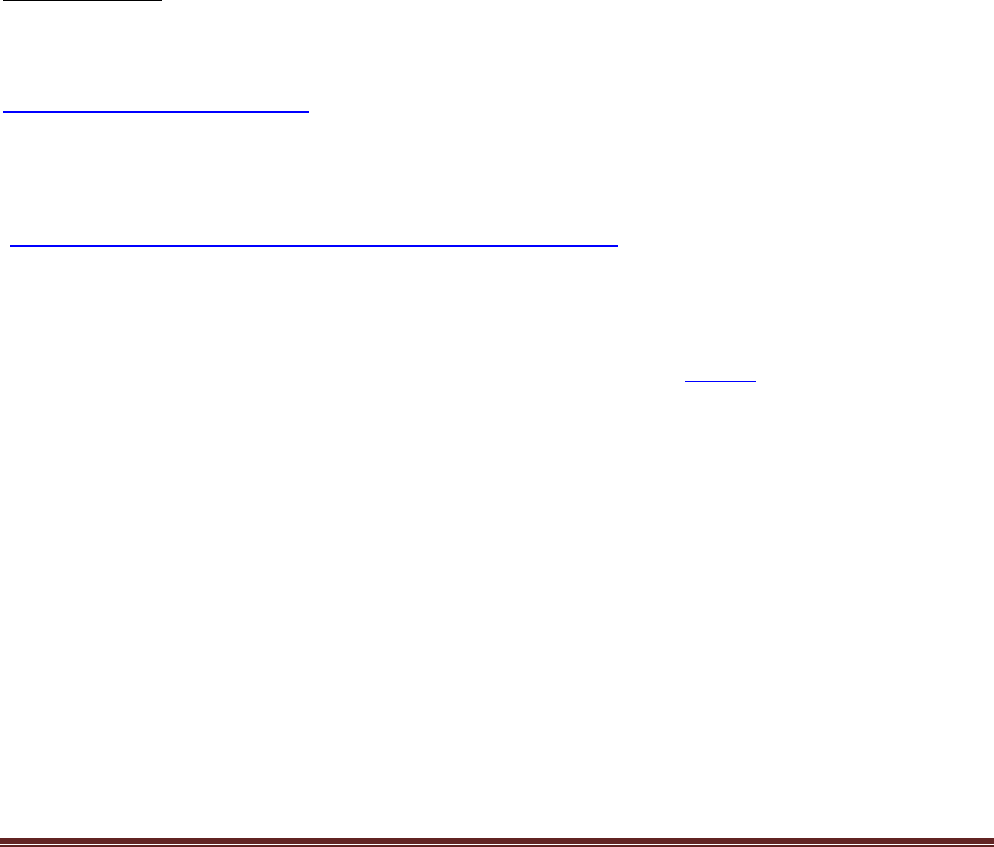
DC Student and Parent Handbook July 2022 Page 17
term course evaluations, for current students, on behalf of the Dual Credit Program prior to finals week for
onsite and online classes. These evaluations are sent to the student’s BSU email address.
The Dual Credit Program administers all other evaluations through the University’s institutionally-adopted
survey tool and assessment instrument, called Qualtrics. These evaluations will be sent to the student’s
personal email address.
A Student Course Evaluation will be conducted at the end of each semester; the objective is to learn how
satisfied students were with their experience and instructors. This will be sent to the student’s Ball State email
address.
A Freshmen College Student Evaluation will be conducted one-year-out from high school graduation. The
objective is to gain knowledge about the transferability of the courses and their benefits to the students in
the early stages of their college careers. This will be sent to the personal email the student used for admission.
A Senior College Student Evaluation will be conducted during every student’s expected senior year in college.
The objective is to gain knowledge about the transferability of the courses and how beneficial the courses
were to the students throughout their college experiences. This will be sent to the personal email the student
used for admission.
Student Policies
Code of Student Rights and Responsibilities
The Ball State Code of Student Rights and Responsibilities (Code) is published on-line at
http://www.bsu.edu/studentcode
. The Code provides extensive information about the rights of students as
members of the Ball State community as well as expectations for their behavior and the procedures used to
address behavior that falls short of expectations. The Code applies to students while they are on or off
campus, when they attend university-sponsored events, or when such conduct involves the security or
integrity of the university community. This notice is provided by the Office of Student Conduct
(
https://www.bsu.edu/about/administrativeoffices/student-conduct).
Title IX Policy
Ball State University is committed to establishing and maintaining an effective, safe, and nondiscriminatory
educational environment in which all individuals are treated with respect and dignity. For information about
Ball State University’s Interim Title IX Policy and Procedures, please visit our website
. Please note that the
University’s policy and procedures have undergone significant revisions starting with the 2020-21 school year
and ongoing.
Consistent with the University’s Notice of Nondiscrimination and in accordance with the U.S. Department of
Education’s implementing regulations for Title IX of the Education Amendments of 1972 (“Title IX”), Ball State
University prohibits sexual harassment that occurs within its education programs and activities. This
prohibition extends to all applicants for admission or employment and to all students (any status) and all
employees (any status). An individual who is found to have committed sexual harassment in violation of this
policy is subject to the full range of University discipline, up to and including termination of employment or
expulsion. The University will provide persons who have experienced sexual harassment with ongoing
remedies as reasonably necessary to restore or preserve access to the University’s education program and
activities.
Inquiries concerning the specific application of Title IX at Ball State should be directed to Ms. Katie Slabaugh,
Associate Dean of Students/Title IX Coordinator in the Frank A. Bracken Administration Building, room 238,

DC Student and Parent Handbook July 2022 Page 18
765-285-1545, [email protected]. Persons can also contact the U.S. Department of Education Office for Civil
Rights, Washington, D.C. 20202-1328, 1-800-421-3481, ocr@ed.gov
.
Student Academic Ethics Policy
Actions which include but are not limited to cheating, plagiarism, falsely claiming to have completed work,
cooperating with another person in academic dishonesty, knowingly destroying or altering another student's
work, or attempting to commit an act of academic dishonesty that violates the Student Academic Ethics Policy
(http://www.bsu.edu/associateprovost/academicethics
).
The consequences of academic dishonesty are determined on a case-by-case basis by each instructor and may
include but are not limited to one or more of the following academic sanctions: informal meeting, removal
from dual credit course, dismissal from the university, or other appropriate consequence.
Family Educational Rights and Privacy Act (FERPA)
Students who are currently enrolled or formerly enrolled, regardless of their age, are subject to the Family
Educational Right and Privacy Act (FERPA). The law, also known as the Buckley Amendment, was passed by
Congress in 1974.
FERPA grants four specific rights to students:
• See the information that Ball State has concerning the student
• Seek to amend those records and, in certain cases, append a statement to the record
• Consent to disclosure of his or her records
• File a complaint with the Department of Education Compliance Office in Washington, DC
The only student information the university may release is called directory information (name, phone,
address, enrollment status, etc.). If the student would like others to have access to their information regarding
registration, financial aid, fee payments, etc., please refer them to the Proxy section in Self-Service Banner
(SSB), available through MyBSU (my.bsu.edu
).
To read the full FERPA policy, student’s should visit the Registrar’s website.
Disability Services
If a student needs course adaptations or accommodations because of a disability, please have them contact
our office as soon as possible. The Office of Disability Services
coordinates services for students with
disabilities; documentation of a disability needs to be on file in that office before any accommodations can be
provided. Disability Services can be contacted at 765-285-5293 or
Diversity Statement
Ball State University aspires to be a university that attracts and retains a diverse faculty, staff and student
body. We are committed to ensuring that all members of the campus community are welcome through our
practice of valuing the various experiences and world views of those we serve. We promote a culture of
respect and civil discourse as evident in our Beneficence Pledge
. For Bias Incident Response information, go
to http://cms.bsu.edu/campuslife/multiculturalcenter/bias-incident-reporting or email [email protected]du.
Learning Tools and Resources for Dual Credit Students
Ball State Dual Credit Program Website
Students needing additional information are encouraged to visit our website at www.bsu.edu/dualcredit
.
Ball State Email Account
As a Ball State Dual Credit student you will be assigned a Ball State username. Once they’ve received this

DC Student and Parent Handbook July 2022 Page 19
information you will have access to your BSU email account, which can be accessed at www.bsu.edu/webmail.
Students should check their BSU email daily.
Ball State ID Card
The Ball State ID card is an official form of identification for a student while they are at Ball State. It has their
full name, role (student, employee, vendor, etc.), and photo. They will use it for many important services such
as building access, athletic events, and much more. Students, faculty, staff, other affiliates, and vendors that
are frequently on campus all need to have a Ball State ID card. All on-campus Ball State ID card services are
located in the ID Card Office, located in Bracken Library, Room BL001.
Students may obtain a Ball State ID Card in the mail by providing the ID Card Office with some information and
an acceptable photo
. Once they have an acceptable photo available, they should send an email with the photo
attached to idphoto@bsu.edu and include the following information:
• Subject Line containing the student’s full name and class level (Example: Joe Smith – Dual Credit
Student)
• Message Text containing:
o Their Ball State ID Number
o Their mailing address
o A telephone number where they can be reached if the ID Card Office needs to contact them
• Attach their photo (follow the Ball State ID Card Photo Requirements
to take the photo)
The ID Card Office will verify that the student has registered for classes, review their identification email, and
mail their Ball State ID Card to the address they provided.
BSU ID Number
This is unique identification number generated for the student. A Ball State username and password is
required to be able to view your BSU ID number. It can be viewed through MyBSU
. For instructions on how to
view your BSU ID number, see the appendix.
Canvas
Canvas is a learning management system (LMS) that supports Ball State online dual credit courses. Students
are able to share course materials and activities, discuss, chat, submit course content, find syllabi, and access
announcements.
Students can access Canvas through their Self-Service Banner
, after logging in. Canvas works best with the
Chrome browser. To familiarize themselves with Canvas, students can view the Canvas Student Orientation.
Clearpath
Clearpath is an advising tool that uses career and personality assessments to help you explore how Ball State
Dual Credit courses can define your educational path. Engage, learn, and explore with this interactive tool. A
link to Clearpath can be found on the Dual Credit homepage
.
Communication (COMM) Center
As a Ball State student, you will be sent on-campus information. To manage your subscriptions, go to the
Communication Center webpage
and click on ‘Manage Subscriptions’.
Computer labs
Unified Technology Support (UTS) computer labs provide the latest technology to Ball State students, faculty
and staff at prime locations across campus. They have general use labs and an accessible technology lab for
students with disabilities, and more. Located on the first floor of the Student Center (SC)
, across from the
Tally, the SC 118 general use computer lab has computers that feature a variety of software applications for

DC Student and Parent Handbook July 2022 Page 20
student and staff use, including: Microsoft Office 2019, SPSS Statistics 24, Windows 10 and Respondus
Monitor. Bracken Library also has computers for general student use. General lab use policies and additional
information about computer labs can be found on the Information Technology website
. An ID may be required
for entry in to the computer lab.
Counseling Services
The Counseling Practicum Clinic offers counseling services to people in Muncie and the surrounding area.
Counseling and counseling psychology graduate students work with clients under the supervision of licensed
psychologists and counselors.
Payment is expected at the time services are rendered. Cost is $10 per session. No client will be denied
services because of the inability to pay. To make an initial appointment, call the clinic and complete a 15-20
minute telephone interview. For more information visit the Counseling Practicum Clinic’s website
.
Indiana Diploma Requirements
Depending on the type of diploma a student is attempting to earn, it is possible that credits earned through a
dual credit program may be required. Students are encouraged to view diploma requirements on Indiana’s
webpage
.
Library
The Bracken Library on the Ball State campus offers unparalleled resources. The library provides valuable
online resources through electronic databases found at (http://bsu.edu/library/). View the resource page
or
the video created especially for Dual Credit students and teachers.
Students can visit the library on campus to use computer labs and access resources for their classes. An ID
card and one additional form of ID, i.e. school ID, state ID or DL, may be required for library services and to
check out materials.
MyBSU
Students have access to the online Ball State student portal called MyBSU
. The University username, provided
as part of the admissions process, is required to login to MyBSU. You will need to use MyBSU for the
following:
• To view grades at the end of the term and/or academic year.
• To pay your ebill.
• To access your unofficial transcript for course planning.
• To request your official BSU transcript to begin the process of transferring credits earned as a dual
credit student.
• To access your free BSU student email account (which can be forwarded to your personal email).
Myers-Briggs Personality Assessment
Students that are unsure of which career path or major to explore as an undergraduate student, can use the
Myers-Briggs Personality Assessment. This test uses scientifically-based insights to categorize personalities
into 16 possible types and identifies common behaviors. The end result means that the student will
understand themselves better so they can make a career choice that best fits their personality. Visit the
Myers-Briggs webpage
for additional information and/or to access the test. Students should choose the “free
assessment” option.
Technology HelpDesk
Ball State’s Technology HelpDesk provides full-service support via phone and chat for students. Staff members
can help students with questions related to Canvas, Duo Authentication, username and password, and Ball

DC Student and Parent Handbook July 2022 Page 21
State email account. The HelpDesk may be contacted at 765-285-1517 or toll-free at 866-771-3276. Additional
information and the chat feature can be found on their webpage
.
TransferIn Home (Indiana Core Transfer Library)
Indiana developed the Core Transfer Library (CTL)
, which was created to help students transfer credit among
Indiana’s public institutions and some independent colleges, assuming adequate grades. The website
www.transferin.net provides additional information about the transferability of courses. Remember that dual
credit courses not included in the CTL will likely transfer to other public and many other independent
institutions; the student should check with their college of choice prior to enrolling in the course though.
Tutoring Services
The Learning Center offers free Tutoring and Academic Coaching for many courses at Ball State. Students can
make appointments for online (Zoom) or in-person (NQ 350) appointments. Unvaccinated students are
required to wear masks and practice physical distancing in the Learning Center.
To make an appointment, students should visit my.bsu.edu and click on “TutorTrac” in the Additional Tools
section, or just go directly to https://ballstate.go-redrock.com.
Testing accommodations for students with disabilities are available for students who have received the
appropriate documentation from Disability Services. Tests may be administered in the Learning Center.
Supplemental Instruction is available in select courses.
For more information about all of the Learning Center’s programming, visit bsu.edu/learningcenter or call
765-285-1006. Follow them on Instagram: BallStateLC.
Udemy Business
As a Ball State student, you can find thousands of free video tutorials to make your academic projects stand
out. You can learn a new application or get a refresher course on basic skills that you will need as a future
college student. Additional information about Udemy, including instructions on how to access it, can be found
here
.
Undergraduate Admission Application Fee Waiver
Students who take a Ball State dual credit course are eligible for a fee waiver for their undergraduate
application fee, meaning you can apply to Ball State University for free. In addition to receiving the application
fee waiver, you will also receive priority admission status. This means that you will receive an admission
decision within three weeks of the University receiving all the required application materials. Students can
learn more about admission as an undergraduate student on the Admission’s webpage
.
WellTrack Interactive Self-Help Therapy
WellTrack is a self-help program specifically designed for help with stress, anxiety, and depression. The
program is online/mobile and self-directed. It allows students to identify goals and learn powerful strategies
to improve mental health. It is FREE and available to all Ball State University students. To access WellTrack,
students will need to go to https://bsu.welltrack.com/
and sign up using their @bsu.edu email address.
Writing Center
All writers improve with practice and feedback, so as a Ball State student, you are encouraged to use the
Writing Center (in Robert Bell 295, Bracken Library, or online) to get additional feedback on your writing. To
schedule a free appointment to discuss your writing, go to www.bsu.edu/writingcenter
. Online and in-person
appointments are available seven days a week; however, plan ahead because appointments book quickly!

DC Student and Parent Handbook July 2022 Page 22
Appendix
Applying for admission via Slate Page 23
Registering for classes Page 32
Viewing your Registration Time Ticket Page 34
Resetting your BSU Password Page 36
View your BSU ID Number Page 36
View Final Grades Page 37
Paying your eBill (requires student to log in to Self-Service Banner) Page 39
Paying your eBill as a Guest Payer) Page 40
Setting up an Authorized Payer Page 41
Checking your Academic Progress (SAP) Page 42
Ordering transcripts (as an active student enrolled in the current term) Page 43
Ordering transcripts (as an inactive student who previously attended BSU) Page 44
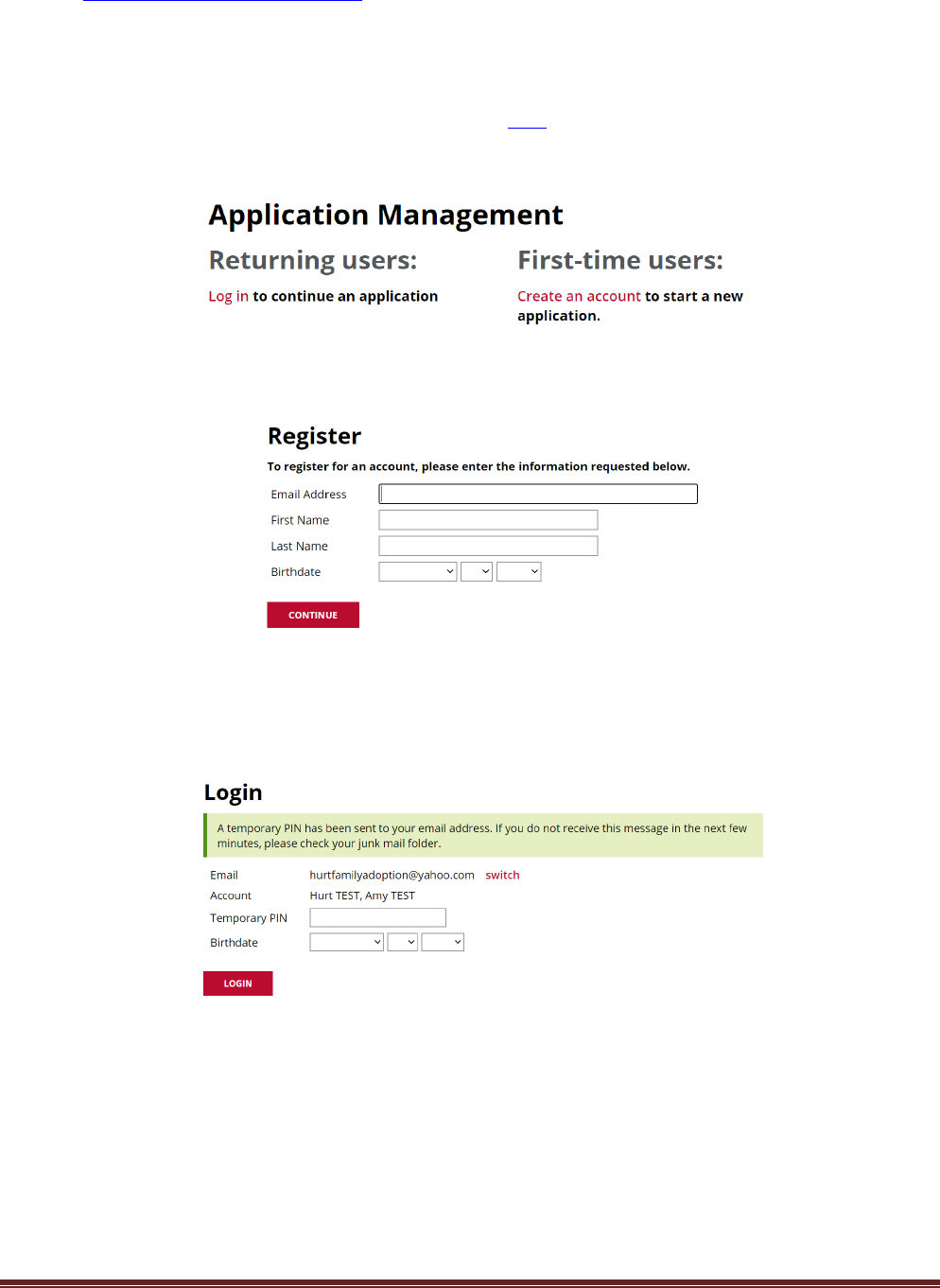
DC Student and Parent Handbook July 2022 Page 23
Applying for Admission via Slate
View our Slate admission instruction video
, if you prefer that to written instructions.
If you have never used Slate before to apply for main campus admission, then start here at step #1.
If you have already set up a user ID and password for Slate, start with the instructions on step #5.
1. Navigate to the Dual Credit Slate Application portal here
.
2. Click ‘Create an Account’.
3. Complete the required information, shown below.
4. Your screen will then prompt you for a pin number, which will be sent to the email address you used
in the step above.
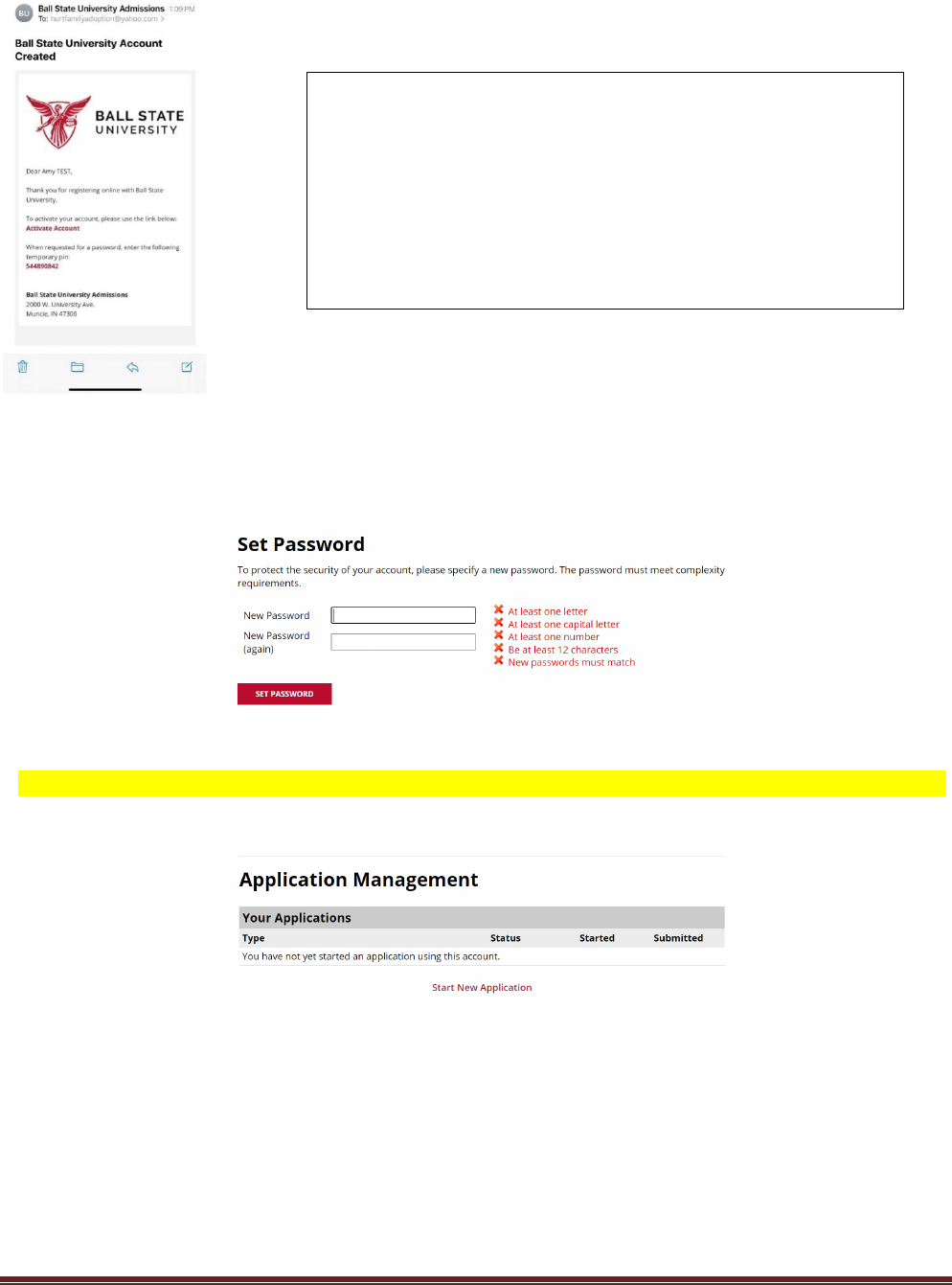
DC Student and Parent Handbook July 2022 Page 24
This is a sample of the email you’ll be sent.
5. Next you will set your password. (Note: This password will only be used for Slate. You will have a
different password for your registration.)
Continue to the next step now that you have established a password.
à Start here if you have a user id and password for the Slate system. You will see this screen after logging in.
6. You will start your application on the next screen, by clicking ‘Start New Application’
7. Next choose the term you are applying for, i.e. Fall 2020 would be the 2020 application cycle
From this email you can: (Either way is fine!)
1. Copy your pin and go back to the web browser screen
where you left off (the screen that asks for your pin
number)
2. Or you can click ‘active account’ and you will be taken to a
browser window asking for your pin
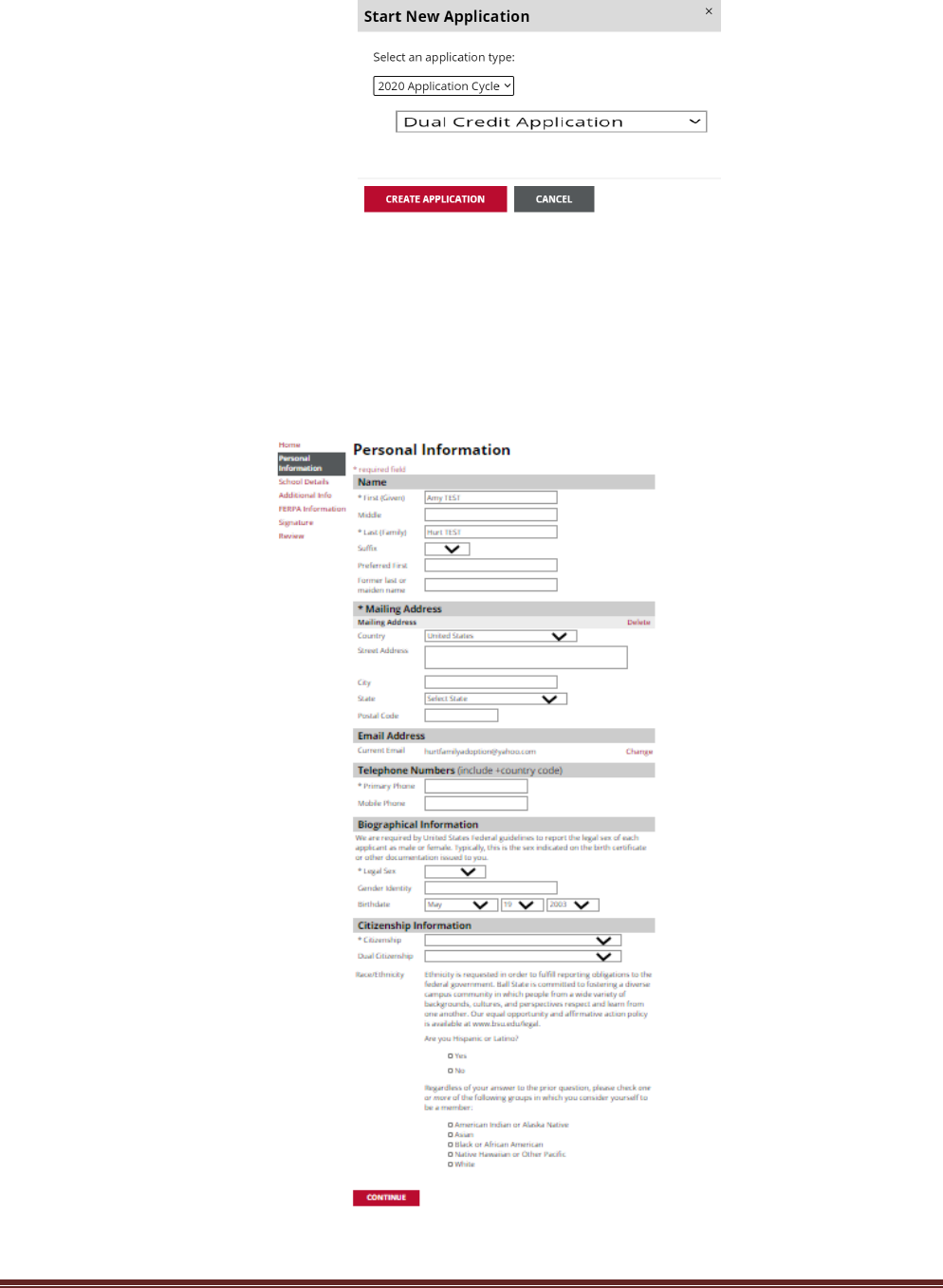
DC Student and Parent Handbook July 2022 Page 25
o In the drop down box below ‘2020 application cycle’, choose ‘Dual Credit Application’, then
click ‘Create Application’
8. You will then be required to fill out several pieces of information on various screens
o Personal Information Screen
Make note that some fields are required. Those are marked with an *. The social
security number is NOT a required field.
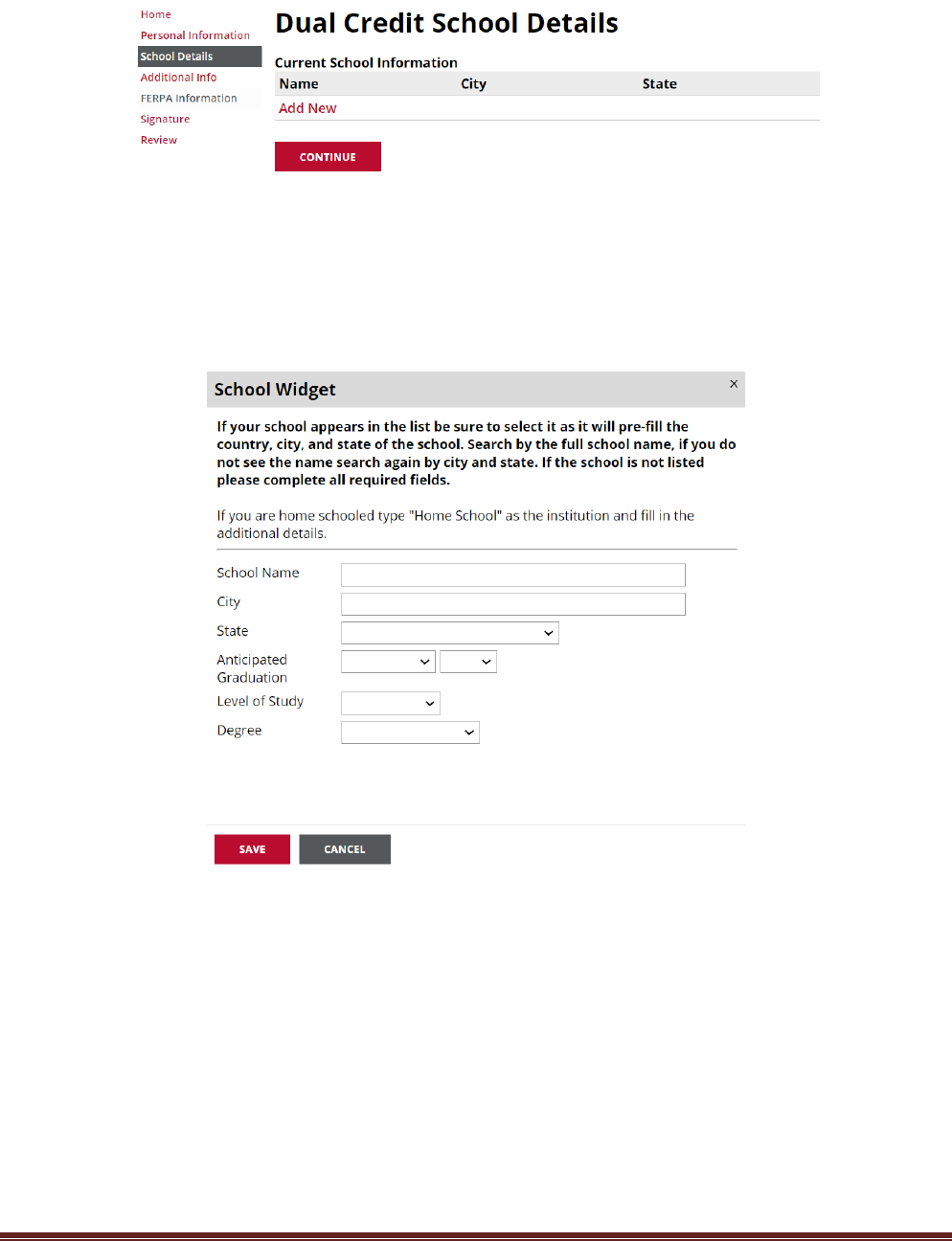
DC Student and Parent Handbook July 2022 Page 26
o School Details Screen
Choose ‘Add New’ to add your current high school information
Start filling in your home school information
• If your school appears in the list be sure to select it, as it will pre-fill the
country, city, and state of the school. Search by the full school name, if you do
not see the name search again by city and state. If the school is not listed
please complete all required fields.
• Once your school information has been saved click ‘continue’
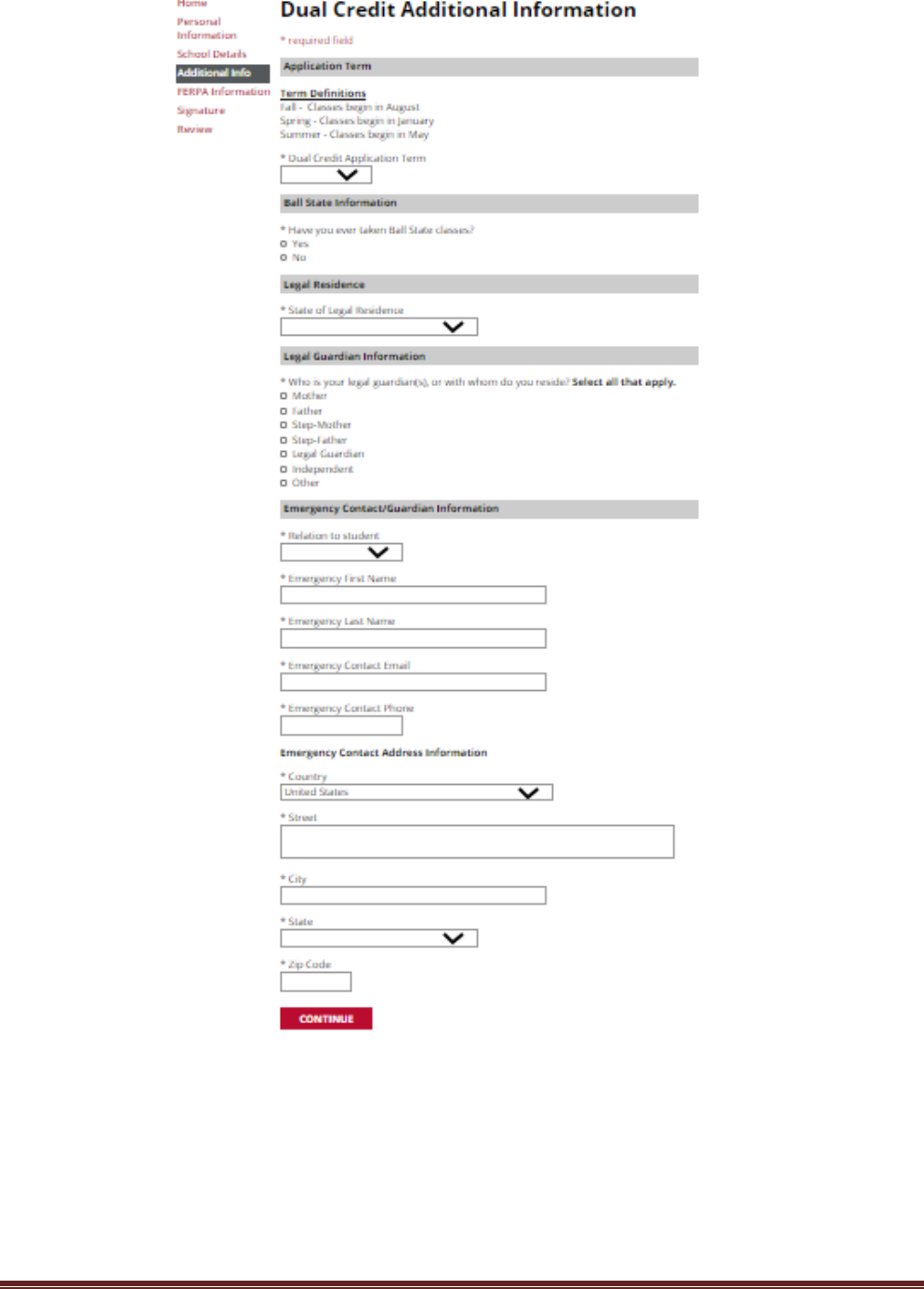
DC Student and Parent Handbook July 2022 Page 27
o Additional Information Screen
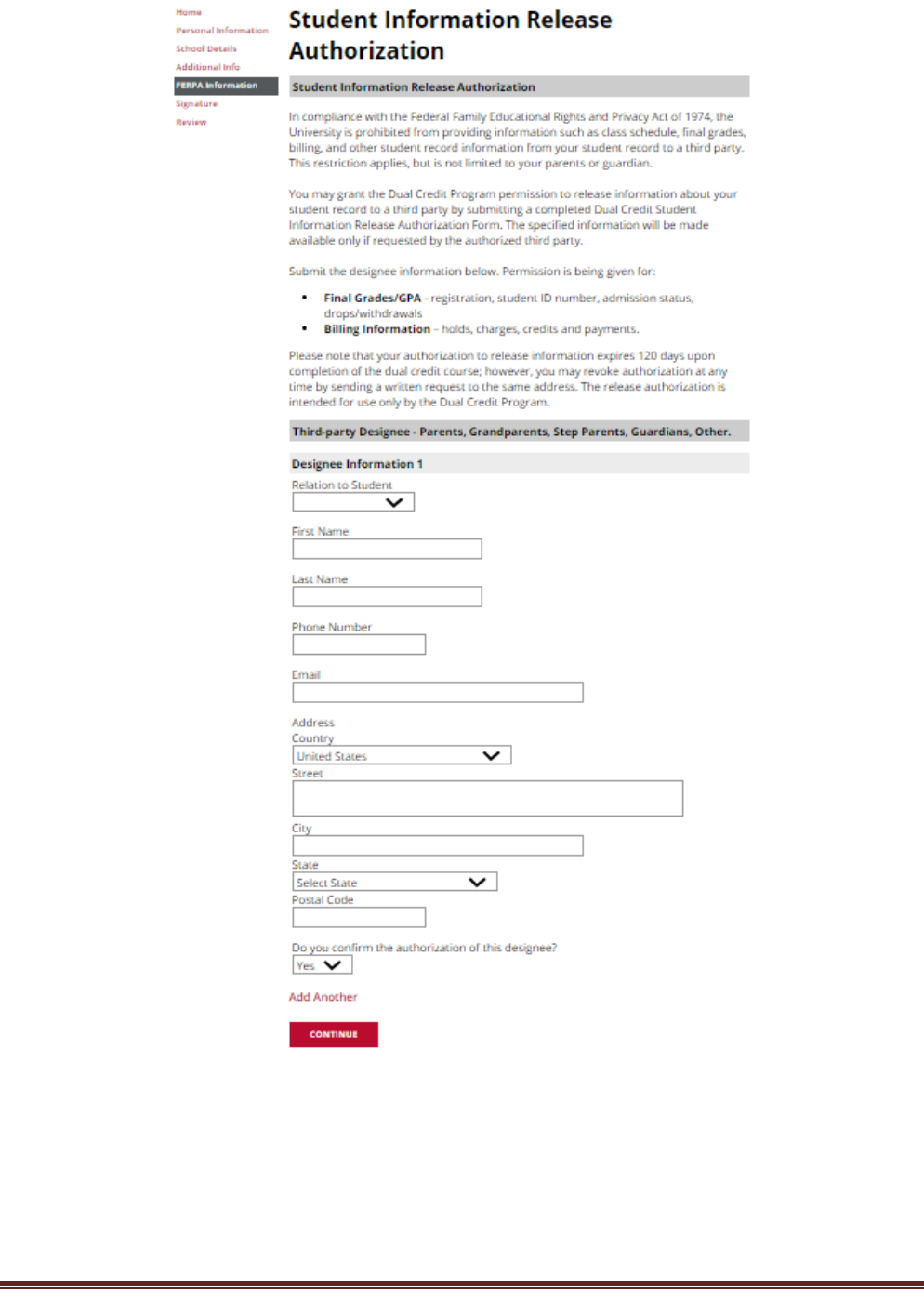
DC Student and Parent Handbook July 2022 Page 28
o FERPA Authorization Screen
o Signature Screen
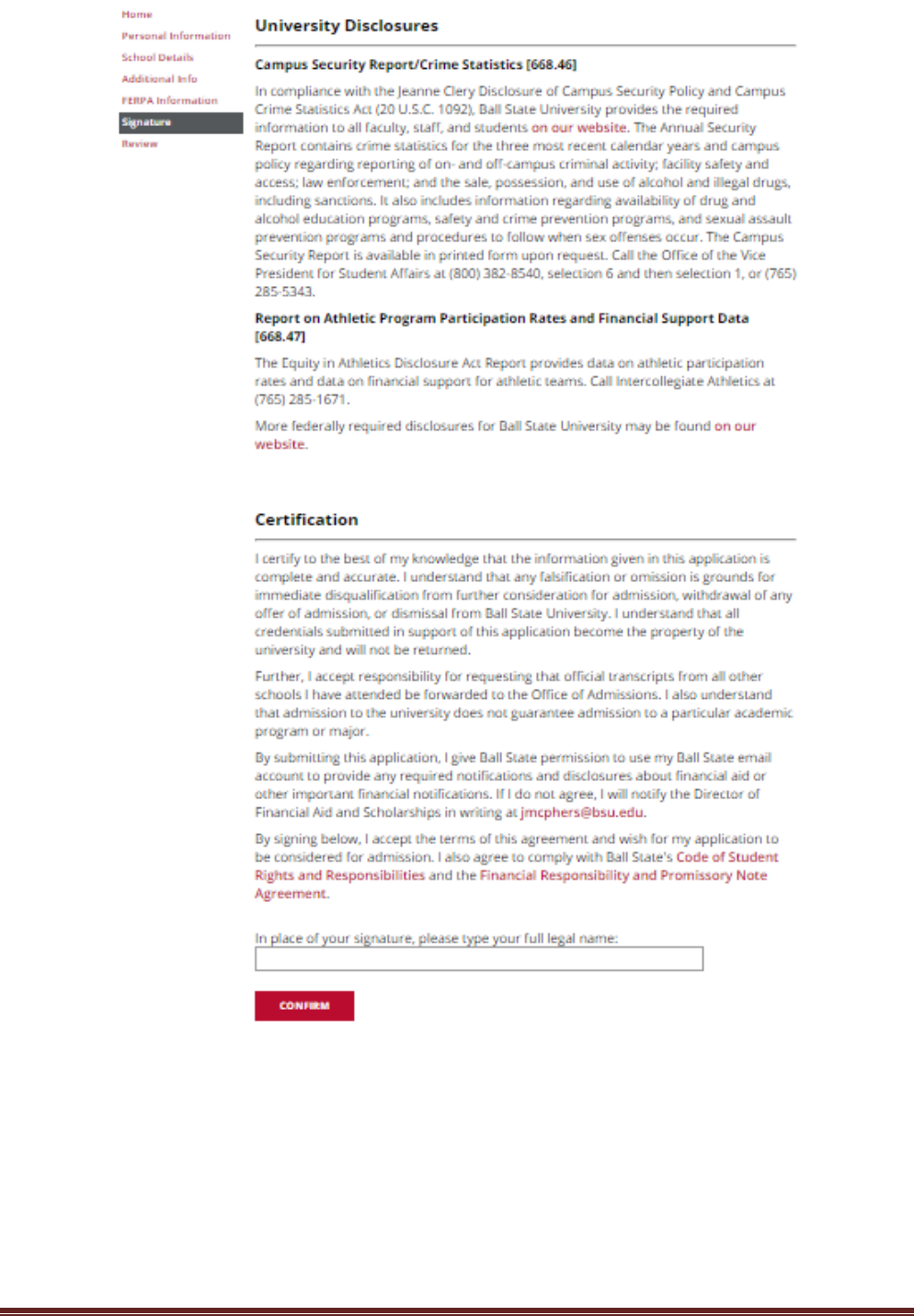
DC Student and Parent Handbook July 2022 Page 29
o Review Screen
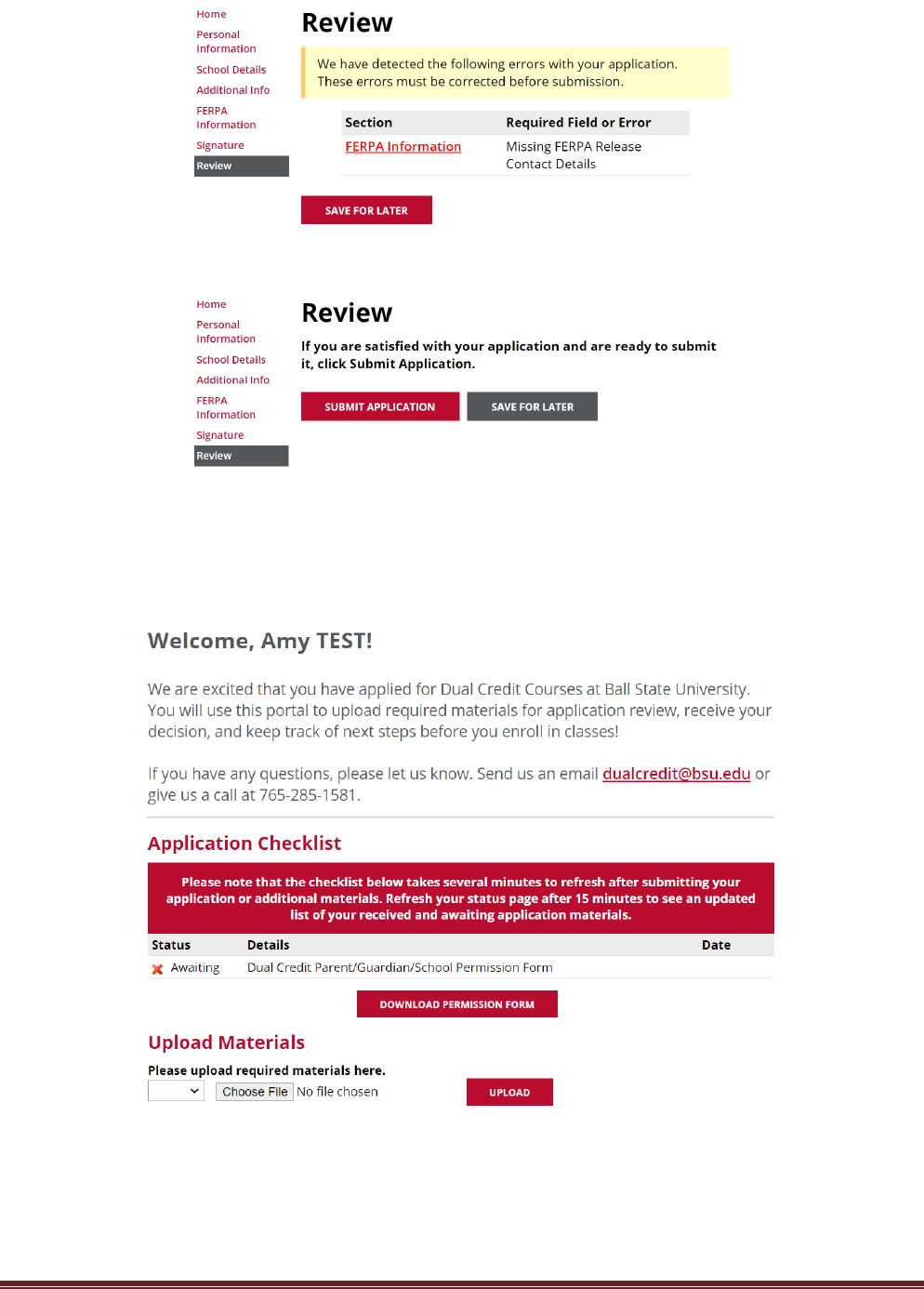
DC Student and Parent Handbook July 2022 Page 30
If you have any areas where you are missing information, it will appear here.
If all information has been entered, you can then submit your application.
Once your application has been submitted you will see the following screen. You will need to upload your High
School/Parent Permission form on this screen.
Note: If you do not have your permission form signed you will be able to upload it later but your application
will not be processed until we have received the uploaded form.
You will use this portal to upload required materials for application review, receive your decision, and keep
track of next steps before you enroll in classes! It is extremely important that you know the email address you
used and password in order to log in to this later!

DC Student and Parent Handbook July 2022 Page 31
Stop! – You are not done yet! You will need to register for your class(es) but you cannot continue to the
next step until you’ve received an email with your Ball State credentials. Typically, you will receive this
information one business day after being admitted.
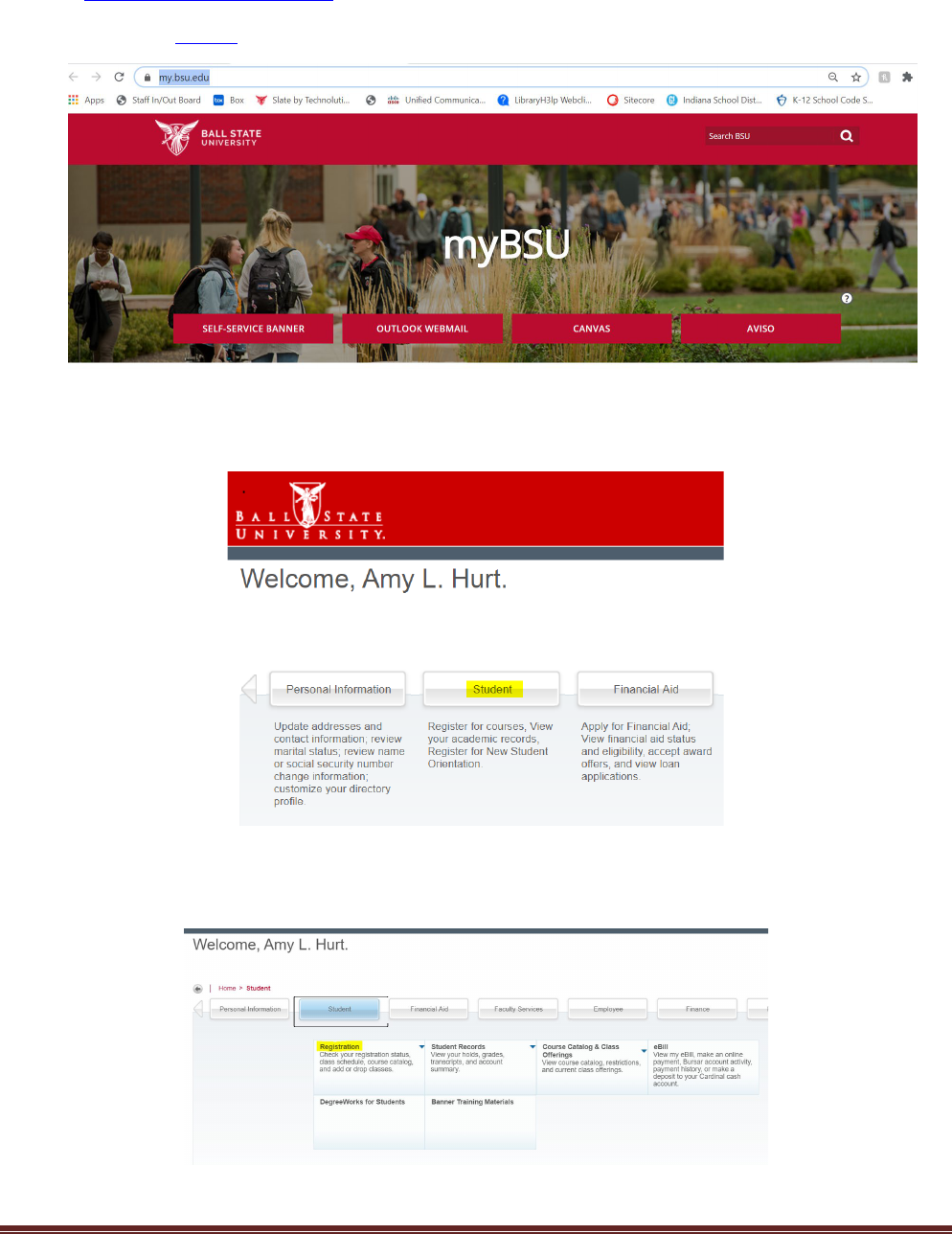
DC Student and Parent Handbook July 2022 Page 32
Registering for Classes
You cannot register for your classes until you have received an email that contains your Ball State
credentials.
View our registration instruction video
, if you prefer that to written instructions.
1. Navigate to MyBSU.
2. Click on the red ‘Self-Service Banner’ button (1
st
red button).
3. Click on the ‘Student’ tab.
4. Click on the ‘Registration’ tab.

DC Student and Parent Handbook July 2022 Page 33
5. Click ‘Course Add/Drop/Withdrawal’.
6. In the drop down menu, choose the term you are registering for, then click ‘Submit’.
7. Click ‘Course Add/Drop/Withdrawal’ again.
8. You may be asked to agree to the terms and conditions of registering before you can access the area
where you enter the course reference numbers.
9. Scroll towards the bottom of the page and you will find empty boxes above the submit button. Enter
the course reference numbers (CRN) that corresponds to the courses you are taking. (each box
represents a single course)
• If you do not know the CRN for the course you are taking, work with your teacher, or you
may send a message to Ball State’s Dual Credit email address at dualcredit@bsu.edu
. In
your message, provide the name of your school, what class(es) you want to take, the
meeting times for these classes, and the teacher’s name.
10. Click ‘Submit’ once all CRN numbers are entered.
• If you registered successfully, you will see the screen refresh and in the middle of the
screen you’ll see the course(s) you registered for listed.

DC Student and Parent Handbook July 2022 Page 35
6. Select the term and click ‘Submit’.
7. You will see your time ticket. This is the day and time you can begin registering for classes that term.
8. This screen also tells you if you have any holds that will prevent you from registering, your academic
standing, and your student status. If all of the bullet points show green check marks, you will be ready
to register for classes when your time ticket opens. If not, please resolve the issue(s) prior to
registration.
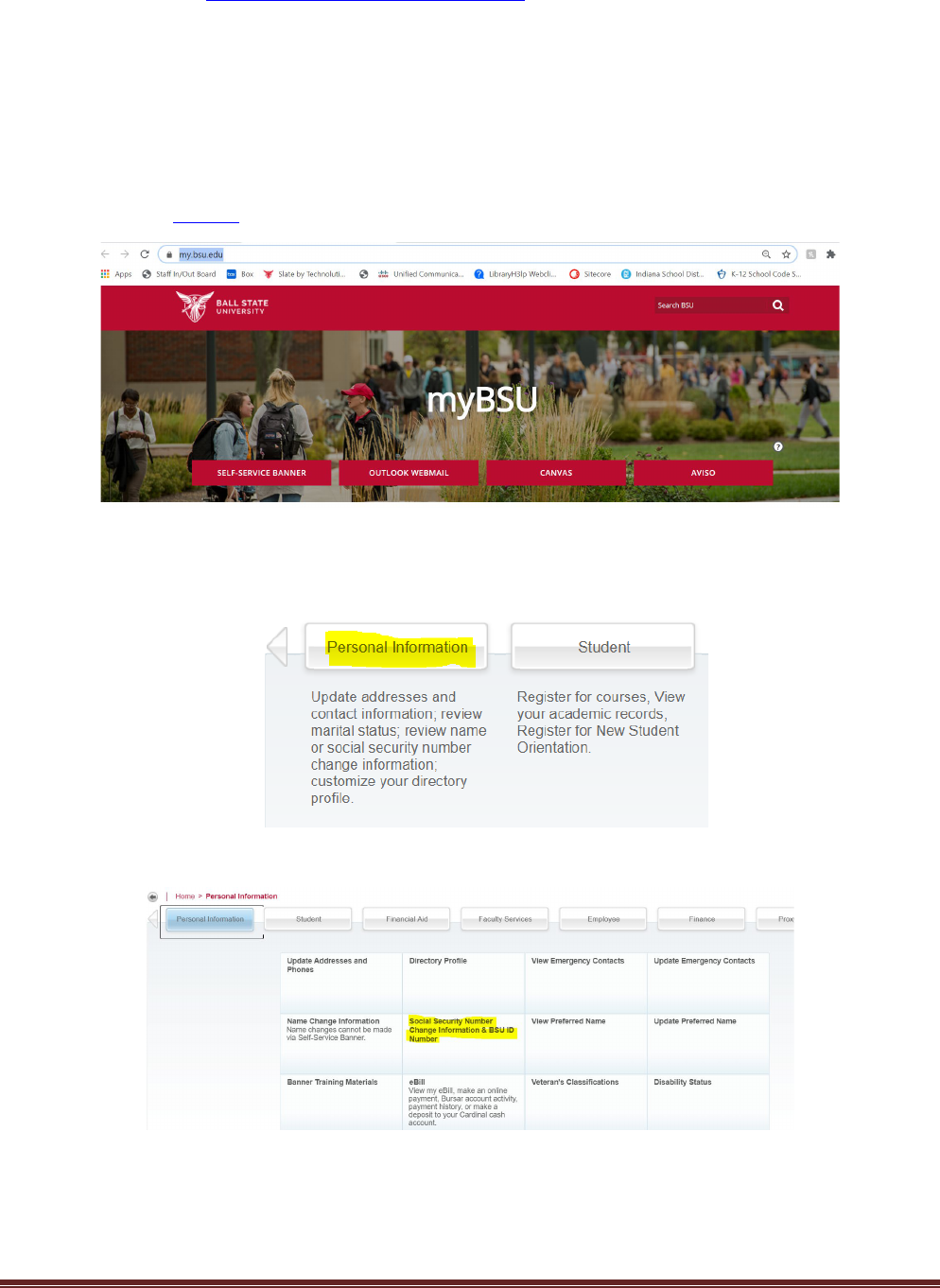
DC Student and Parent Handbook July 2022 Page 36
Resetting your BSU Password
1. Navigate to the Ball State Password Console webpage
.
2. Click on ‘Forgot Password’ (top right corner).
3. Type in your username (contact our office if you need your username) and click ‘Submit’.
4. You will then be sent two emails. The first email will have a URL and a key code. Click on the URL and
type in the key code, then click ‘Submit’.
5. The second email will contain a token for you to create your password.
View your BSU ID Number
1. Navigate to MyBSU.
2. Click on the red ‘Self-Service Banner’ button (1
st
red button).
3. Click on the ‘Personal Information’ tab.
4. Click on ‘Social Security Number Change Information & BSU ID Number’.
5. Your BSU ID number will appear in the middle of the page that displays.
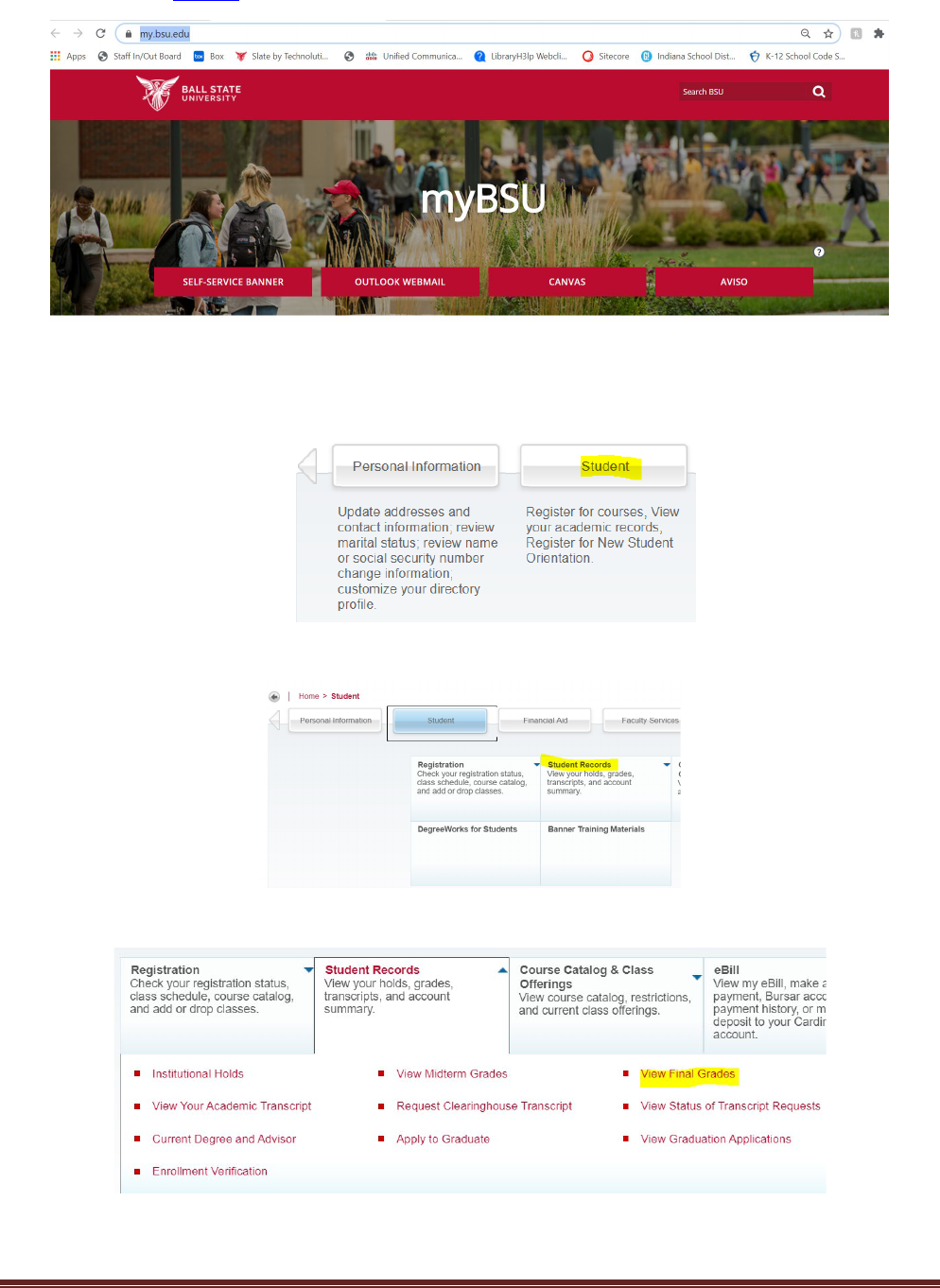
DC Student and Parent Handbook July 2022 Page 37
View Final Grades
1. Navigate to MyBSU.
2. Click on the red ‘Self-Service Banner’ button (1
st
red button).
3. Click on the ‘Student’ tab.
4. Click on ‘Student Records’.
5. Click on ‘View Final Grades’.
6. Select the appropriate term in the drop down box and click ‘Submit’.

DC Student and Parent Handbook July 2022 Page 38
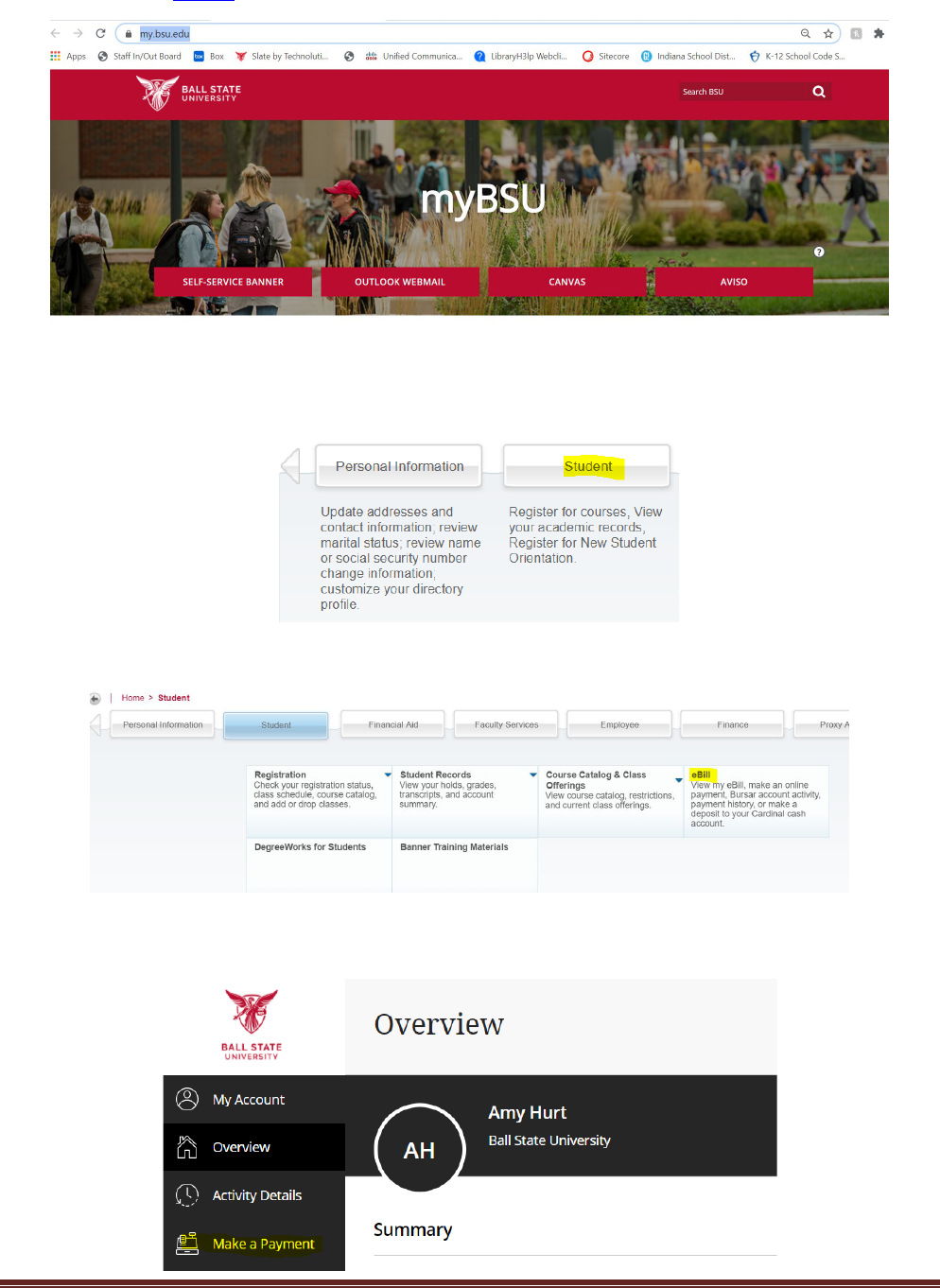
DC Student and Parent Handbook July 2022 Page 39
Paying your eBill (requires student to log in to Self-Service Banner)
1. Navigate to MyBSU
.
2. Click on the red ‘Self-Service Banner’ button (1
st
red button).
3. Click on the ‘Student’ tab.
4. Click on ‘eBill’.
5. On this page, you will find your current account balance under the ‘Activity Since Last Billing
Statement’ section. Click on ‘Make a payment’ to proceed with a payment.
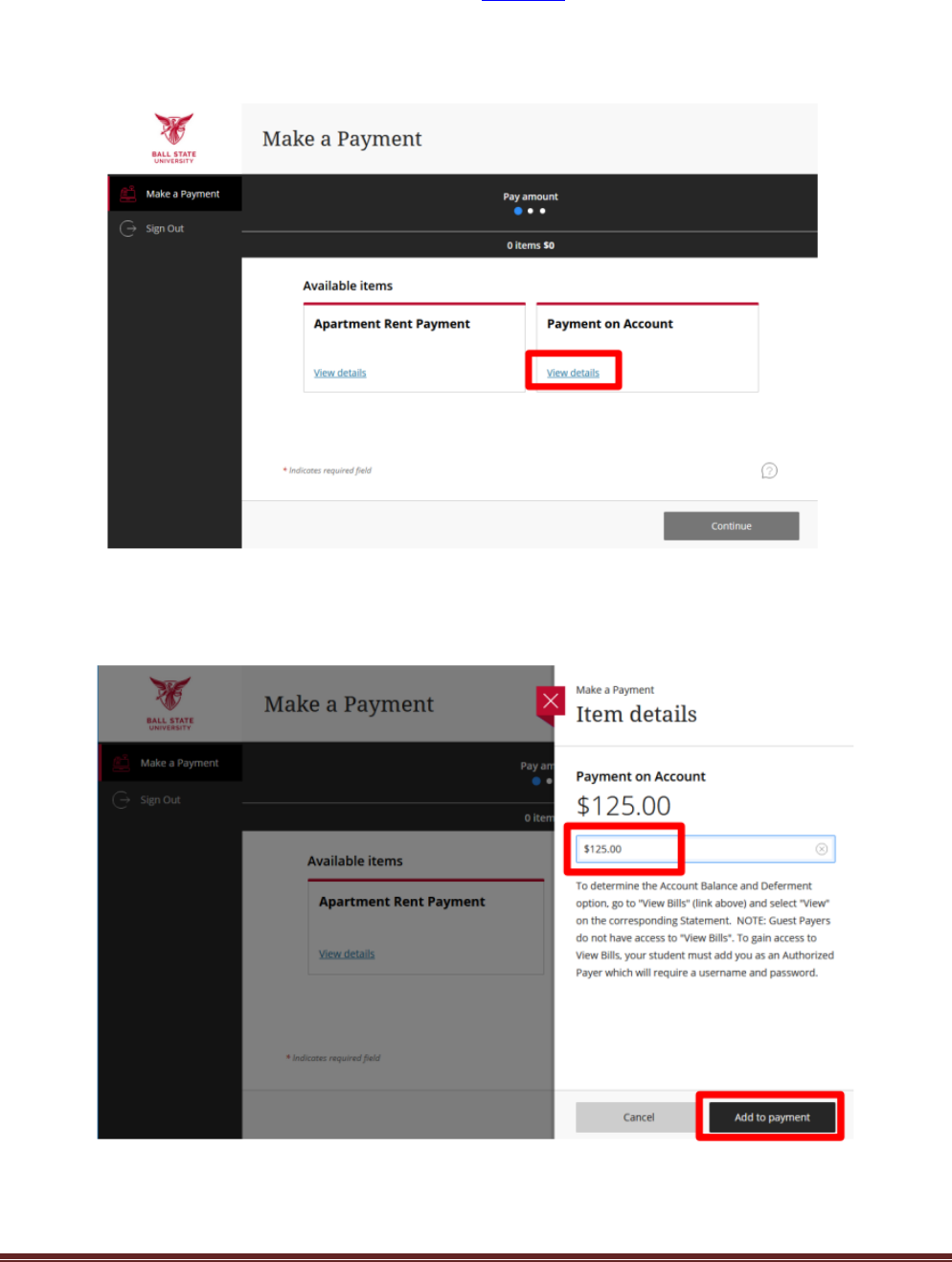
DC Student and Parent Handbook July 2022 Page 40
Paying your eBill as a Guest Payer (requires only the student’s last name and ID number)
1. Navigate to the Student Financial Services’ eBill webpage
.
2. Type in the Student ID and Last name of the account holder (as they appear on the bottom of your
statement/invoice) and click the ‘Sign in’ button.
3. Click on the ‘View Details’ link in the Payment on Account box.
4. Type in the amount you wish to pay, then click the Add to payment button at the bottom. (Remember
that under this option there is no way to view the account balance due.)
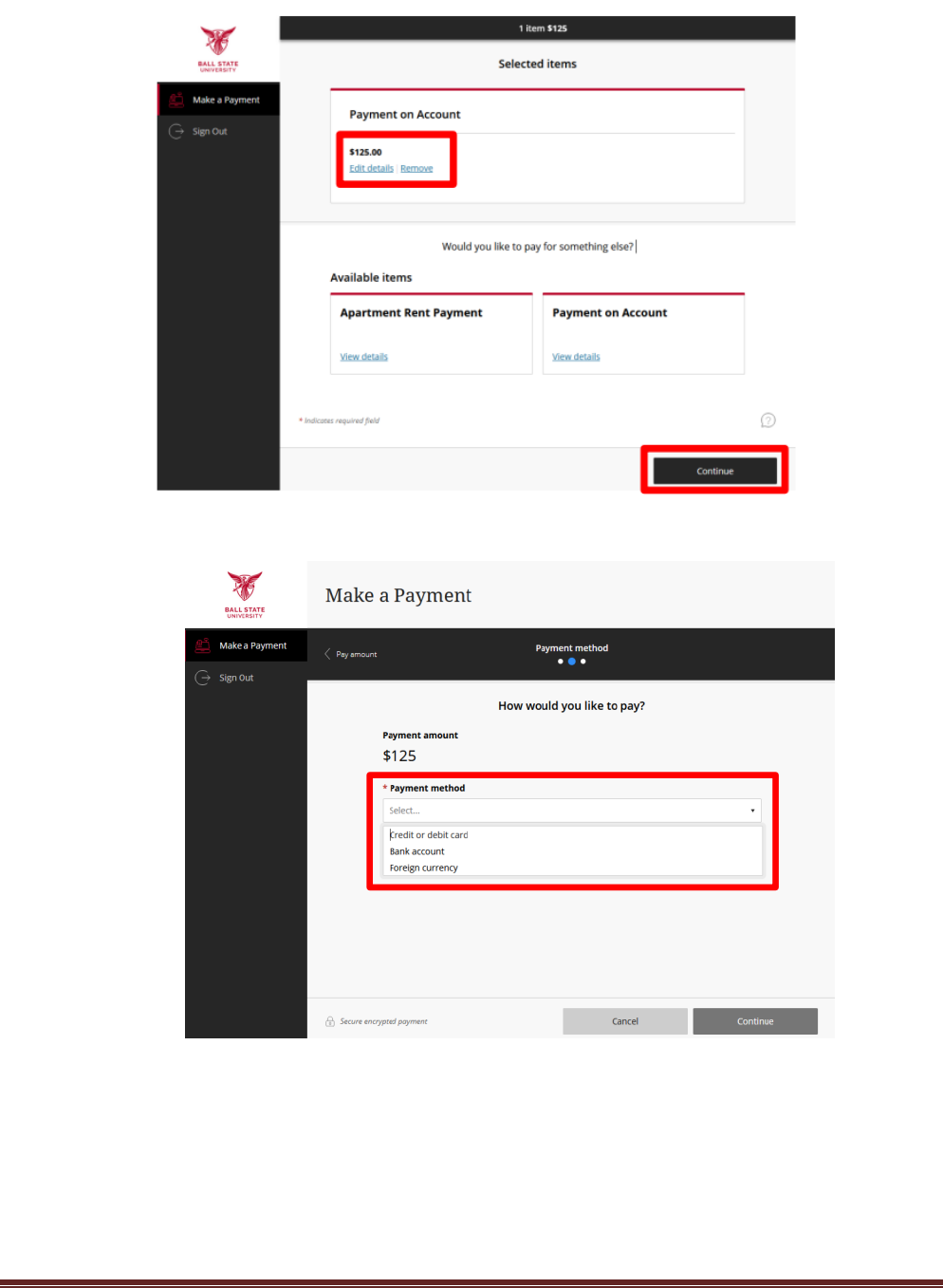
DC Student and Parent Handbook July 2022 Page 41
5. You will see your payment added to the Selected Items section. Scroll down to the bottom of the page
and click the Continue button.
6. Select your preferred payment method from the drop-down list.
7. Fill out the corresponding form, then click the Continue button to go to the next screen and complete
your payment.

DC Student and Parent Handbook July 2022 Page 42
Setting up an Authorized Payer (so your parent/guardian will be able to access your ebill)
1. Log in to MyBSU
.
2. Click on the red ‘Self-Service Banner’ button (1
st
red button).
3. Click on the ‘Student’ tab.
4. Click on ‘eBill’.
5. Click the My Account link on the left-side of the screen. If you are using a cell phone, click the three
horizontal lines in the top-left corner to reveal the navigation page. (Note: Someone can be an
authorized payer on more than one account, but their user name must be unique for each student.)
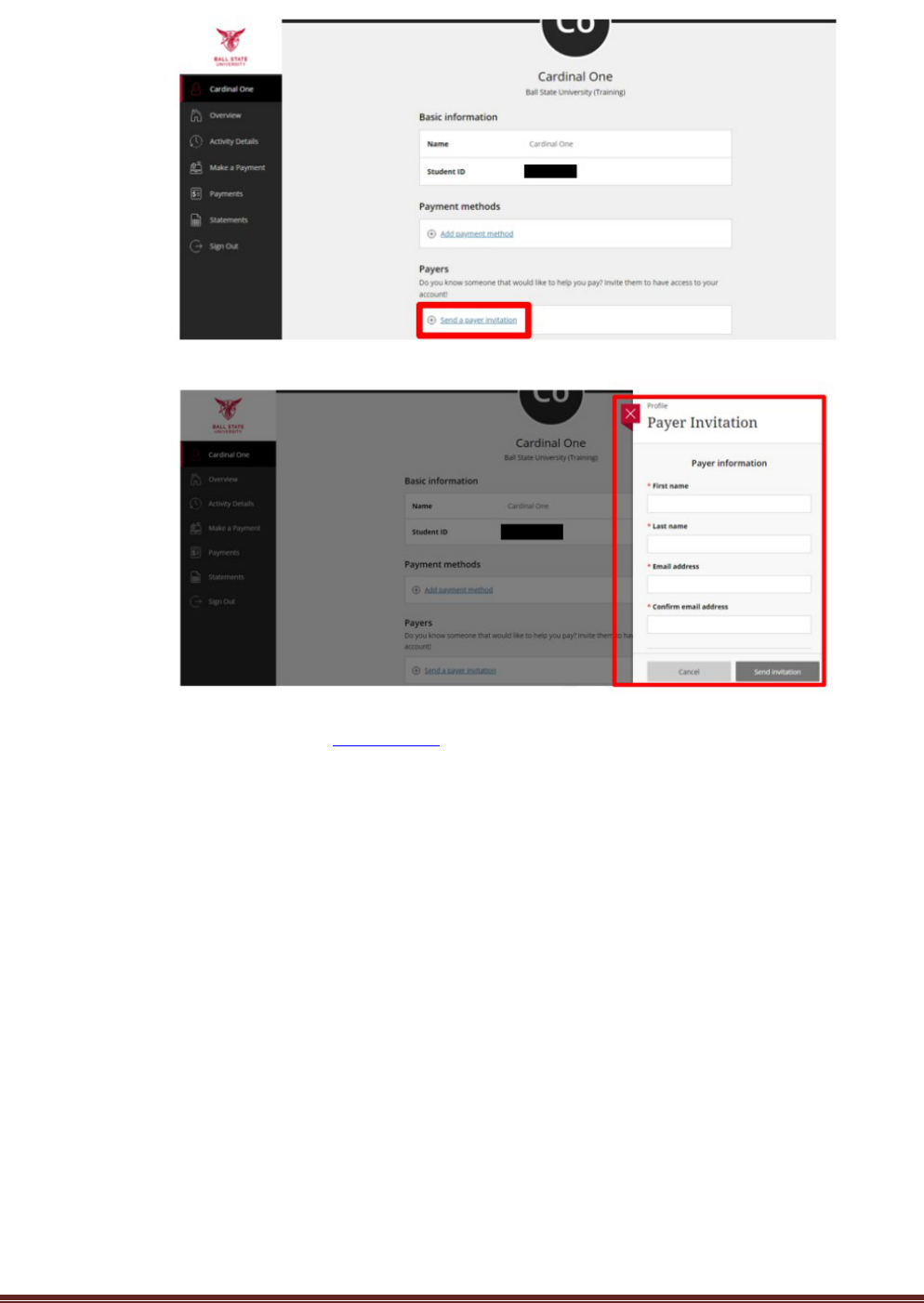
DC Student and Parent Handbook July 2022 Page 43
6. Click the Send a payer invitation link.
7. Fill out the payer invitation and click the Send Invitation button at the bottom.
8. An email will be sent to the authorized payer with a temporary password. If your authorized payer
does not receive an email from [email protected]
within a few minutes, ask them to check their junk/spam
folder.
a. The system will automatically assign a username and temporary password. The first time they
login, they will be forced to change the password to something of their choosing.
b. Authorized payers can change their password at any time by clicking the Forgot password link
at the bottom of the login screen. A new temporary password will be sent to their email
address.
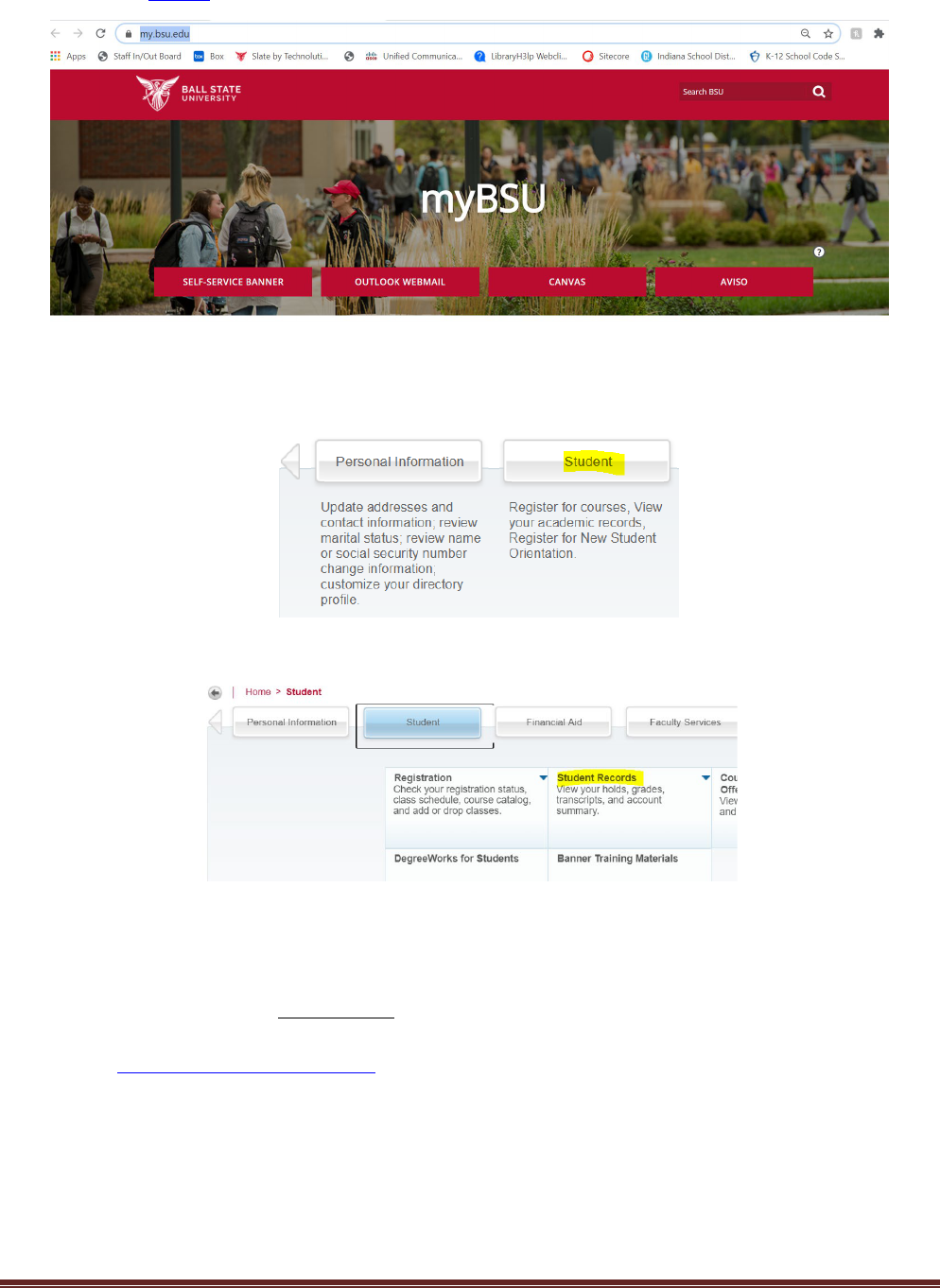
DC Student and Parent Handbook July 2022 Page 45
Ordering transcripts (as an active student enrolled in the current term)
1. Log in to MyBSU
.
2. Click on the red ‘Self-Service Banner’ button (1
st
red button).
3. Click on the ‘Student’ tab.
4. Click on ‘Student Records’.
5. Select ‘Request Printed Transcript’.
For in-person pickups, visit the “Transcript” window of the registrar's office in the basement of Lucina Hall,
Room B-43. There are no fees for current students to pick up transcripts in person or receive them through
the mail. You may request up to 10 free paper transcripts per day for up to 60 days past the end of the Ball
State term (if ordered through Banner). Electronic transcripts have fees associated with them. Fees may be
found on the
Registrar’s transcript webpage.

DC Student and Parent Handbook July 2022 Page 46
Ordering transcripts (as an inactive student who previously attended BSU)
Former students and alumni may request copies of their transcript via the
National Student
Clearinghouse secure order site. You can order in one convenient online session and by using any major credit
card. (Note: Do not enter your social security number, if asked. Please use your BSU ID#.) Transcripts will be
mailed unless otherwise requested.
Upon making a request, users must digitally sign a consent form as part of the process or download and return
a copy to the National Student Clearinghouse via fax or email. Once the form is completed, students will be
able to track the progress of their order via real-time email updates or through the
National Student
Clearinghouse website. Fees may be found on the Registrar’s transcript webpage.

DC Student and Parent Handbook July 2022 Page 47
Connect with Us
Dual Credit Program
Ball State University
Letterman Building Room 131
Muncie, IN 47306
Phone: (765) 285-1581
E-mail: dualcre[email protected]du
Dr. James Hendrix
Assistant Director of High School and Statewide Initiatives
Phone: (765) 285-6783
Email: jchendr[email protected]du
Nancy Day
High School and Statewide Initiatives Coordinator
Phone: (765) 285-3592
Email: nday@bsu.edu
Amy Hurt
Student Process Coordinator/Dual Credit
Phone: (765) 285-5776
Email: alhurt@bsu.edu
